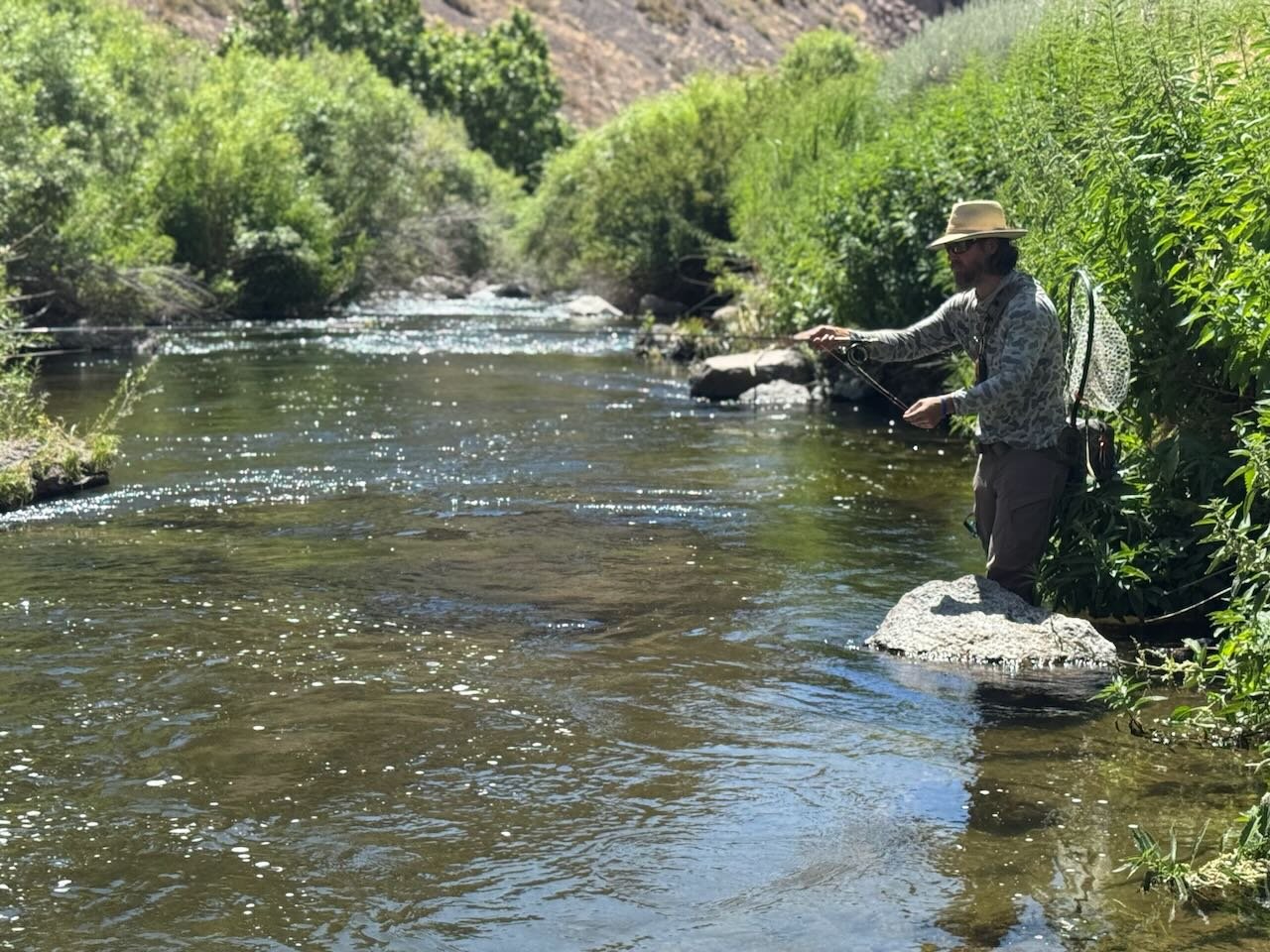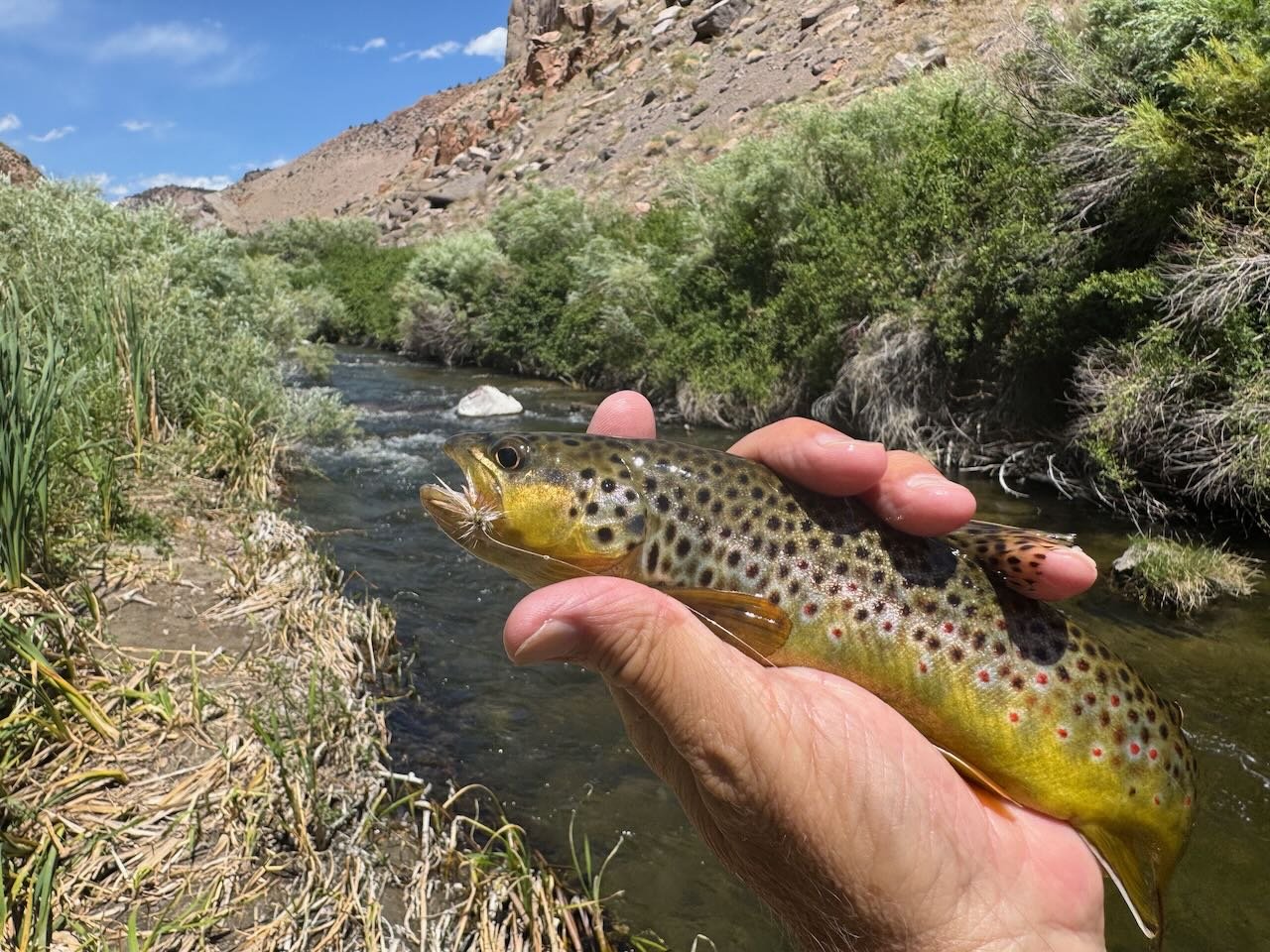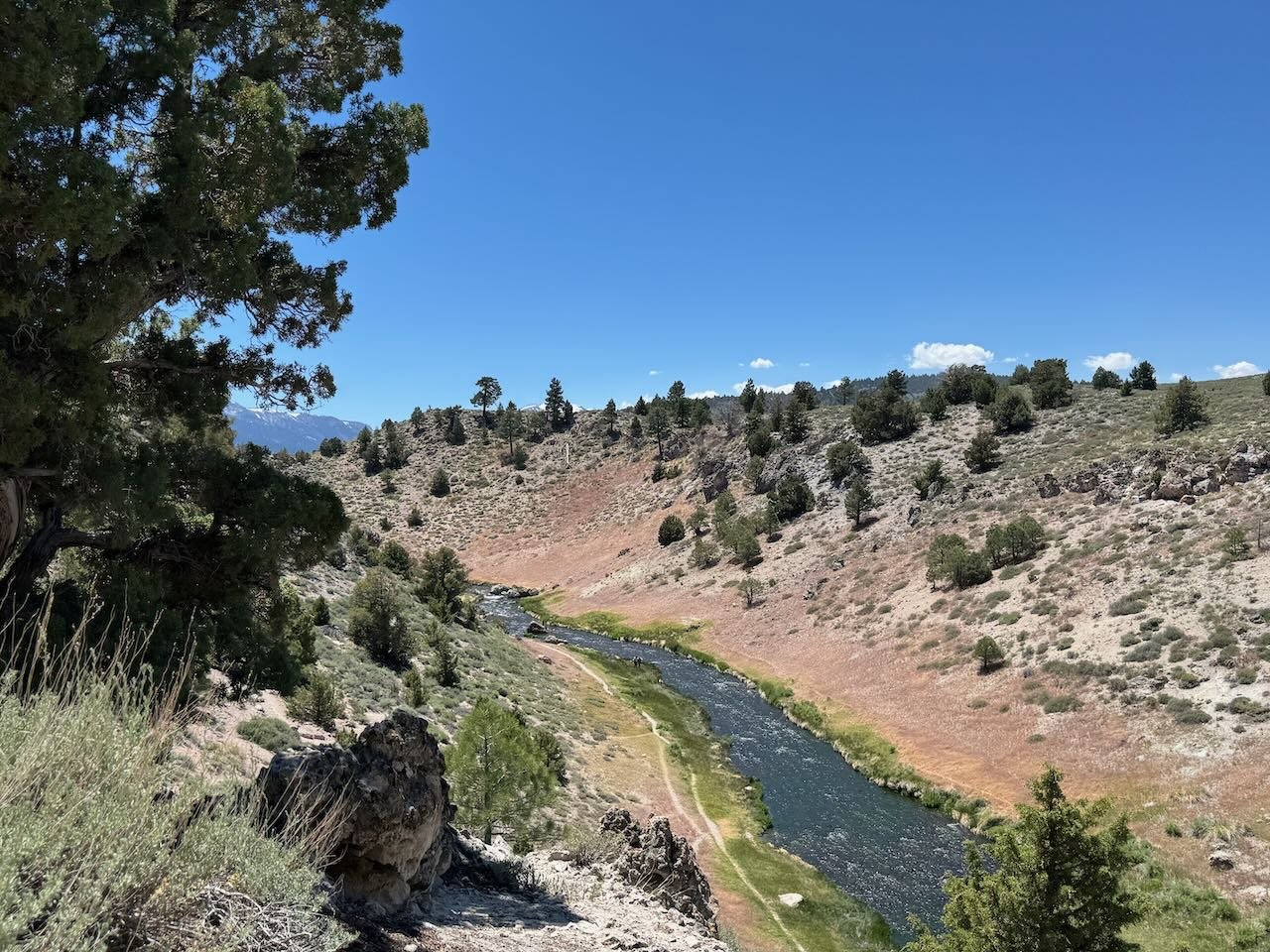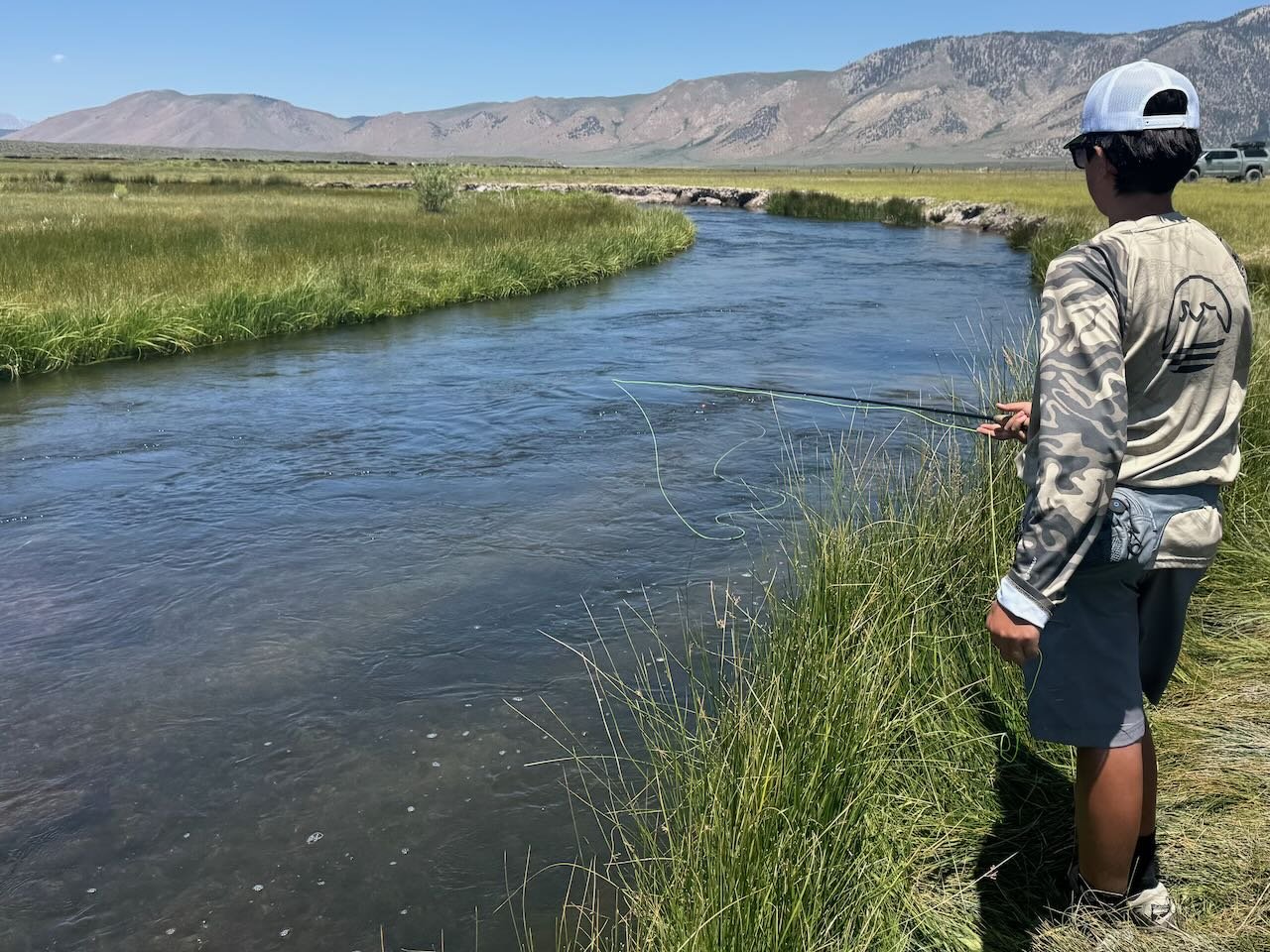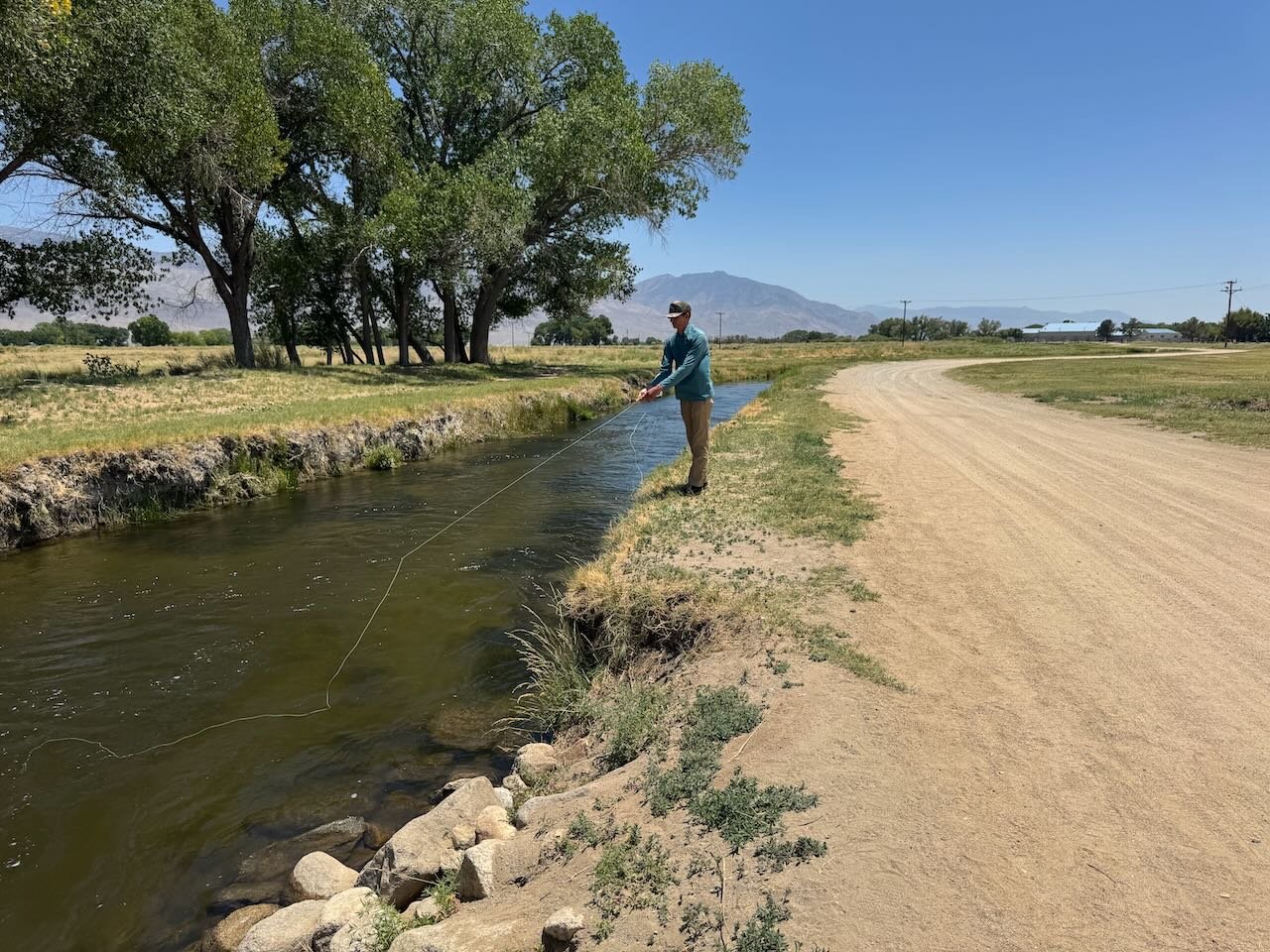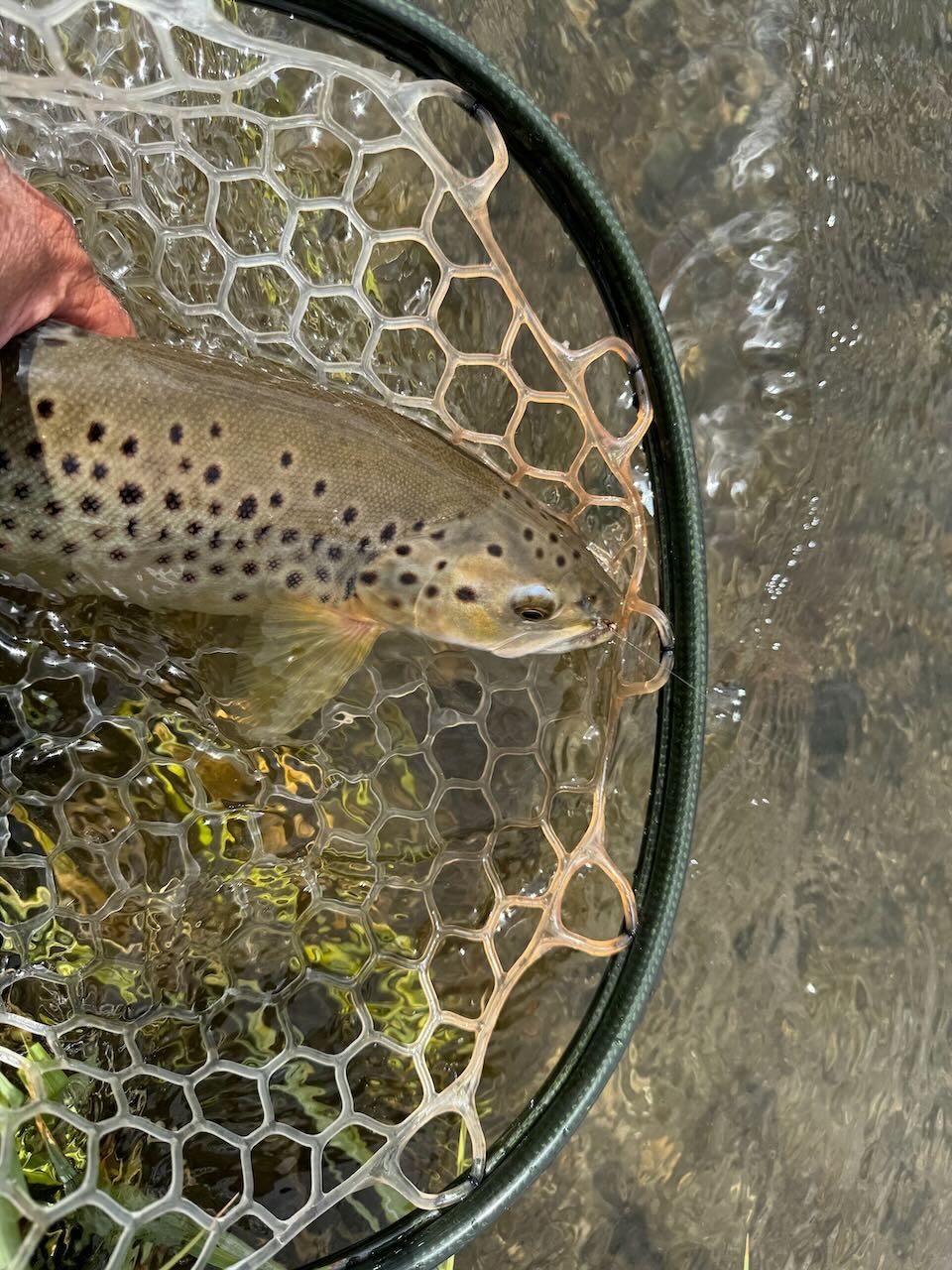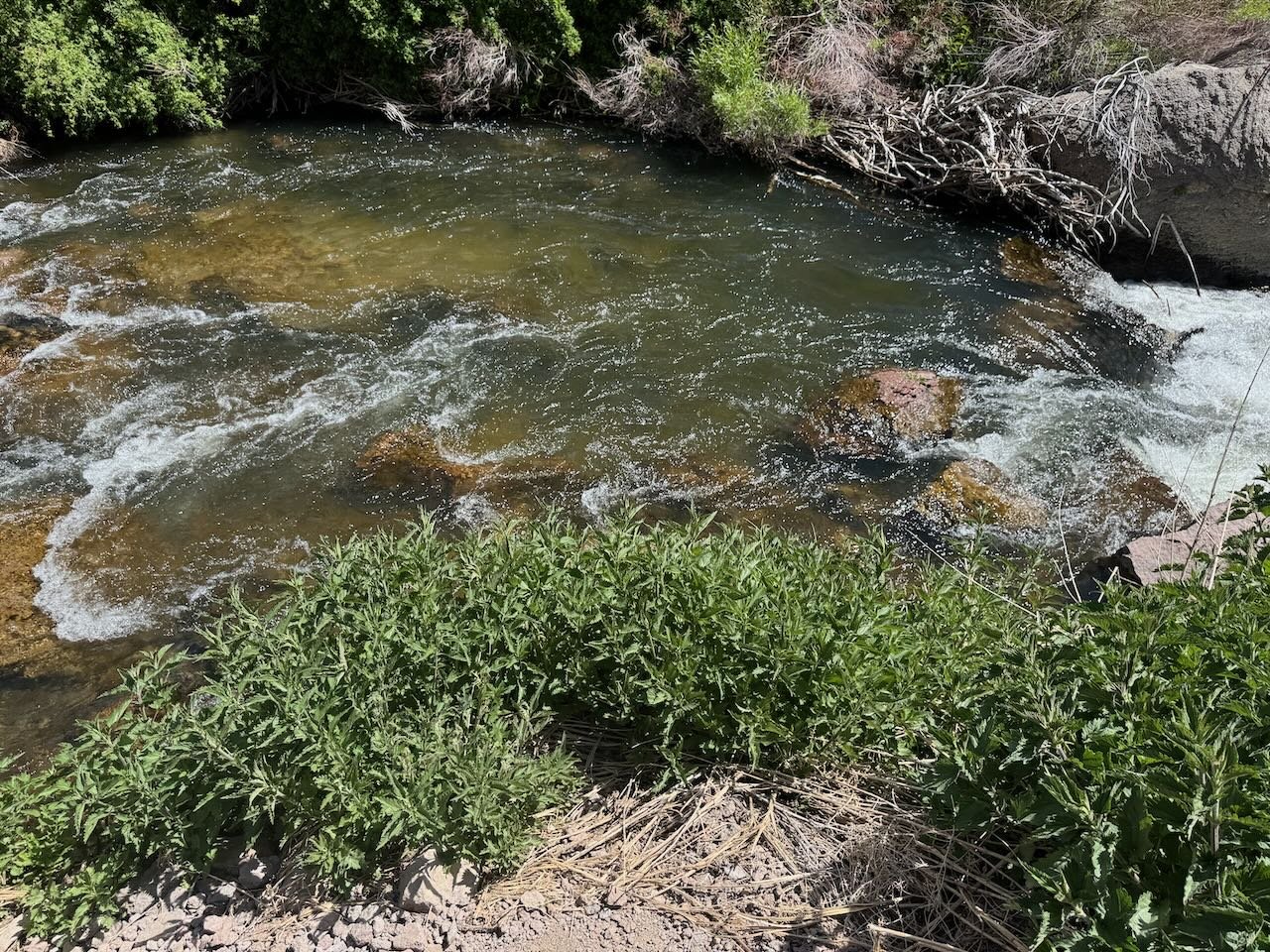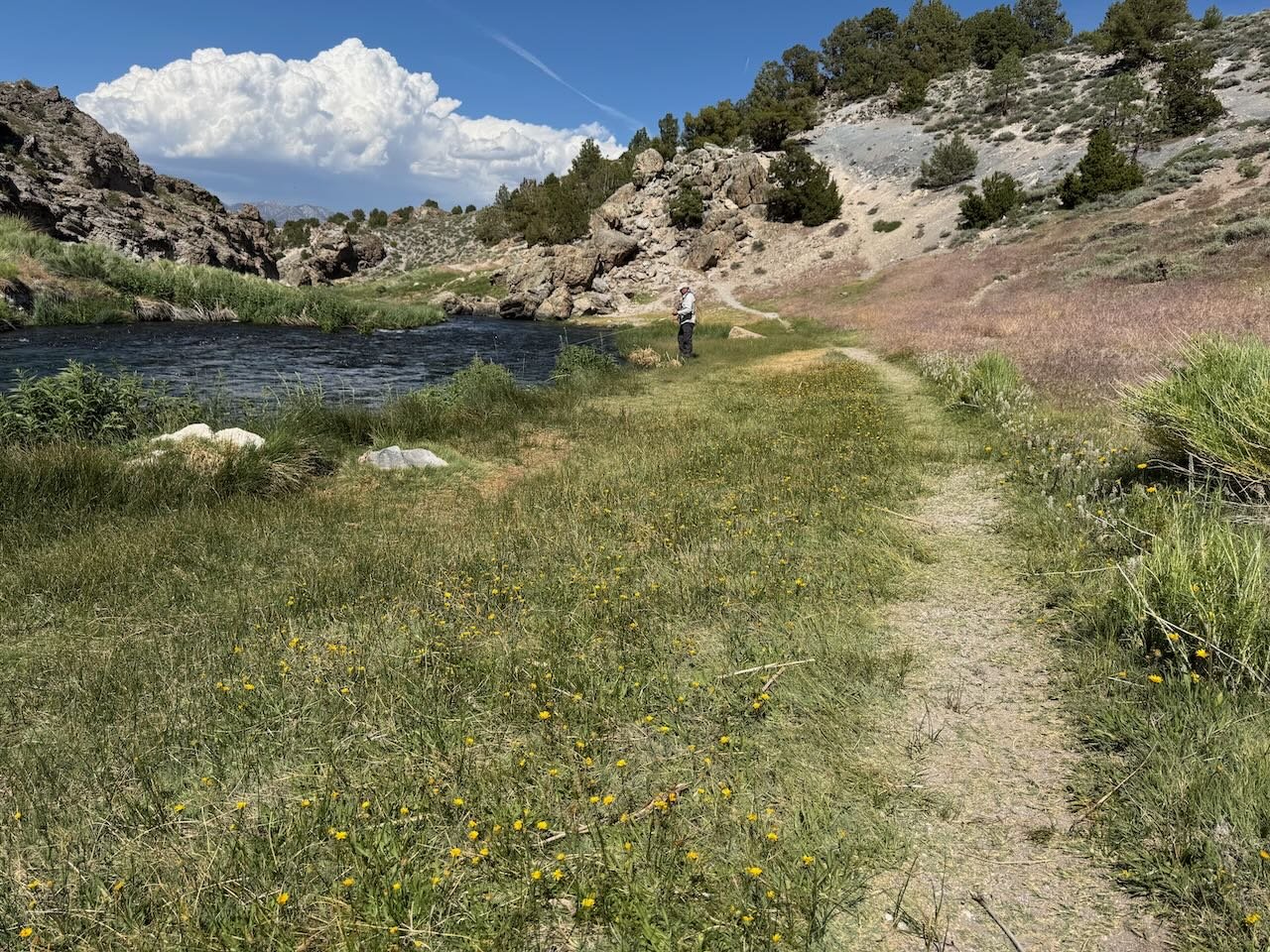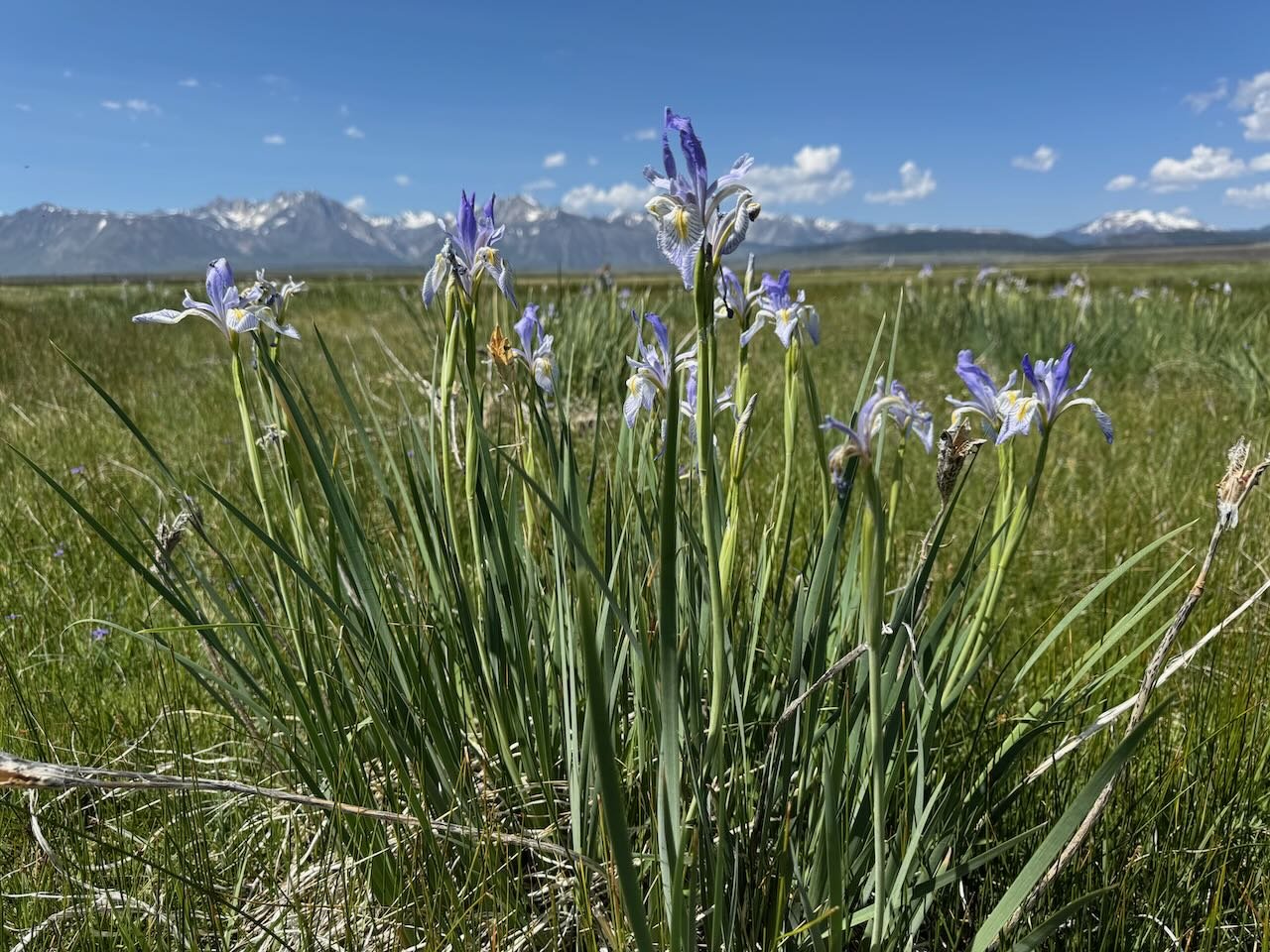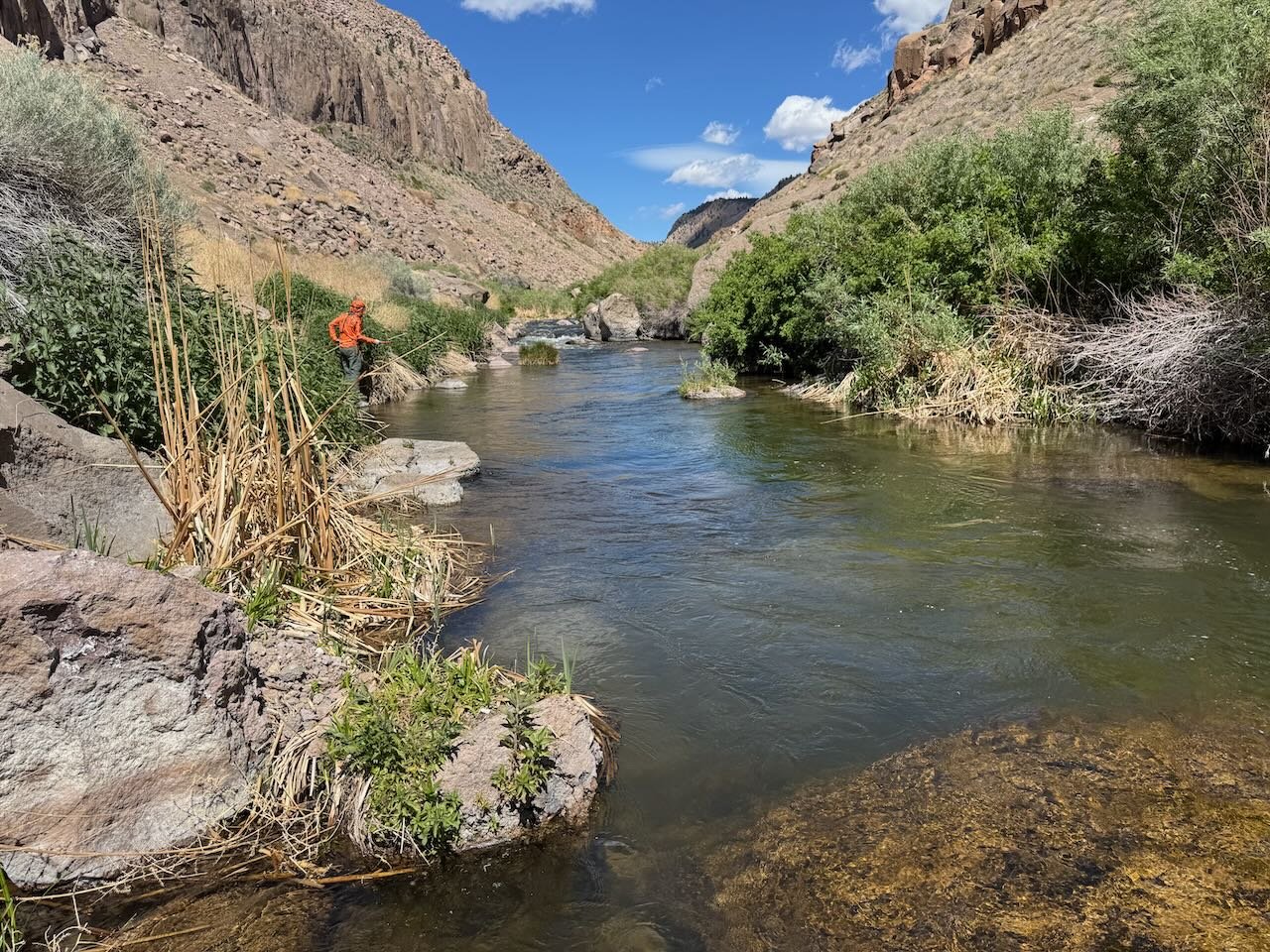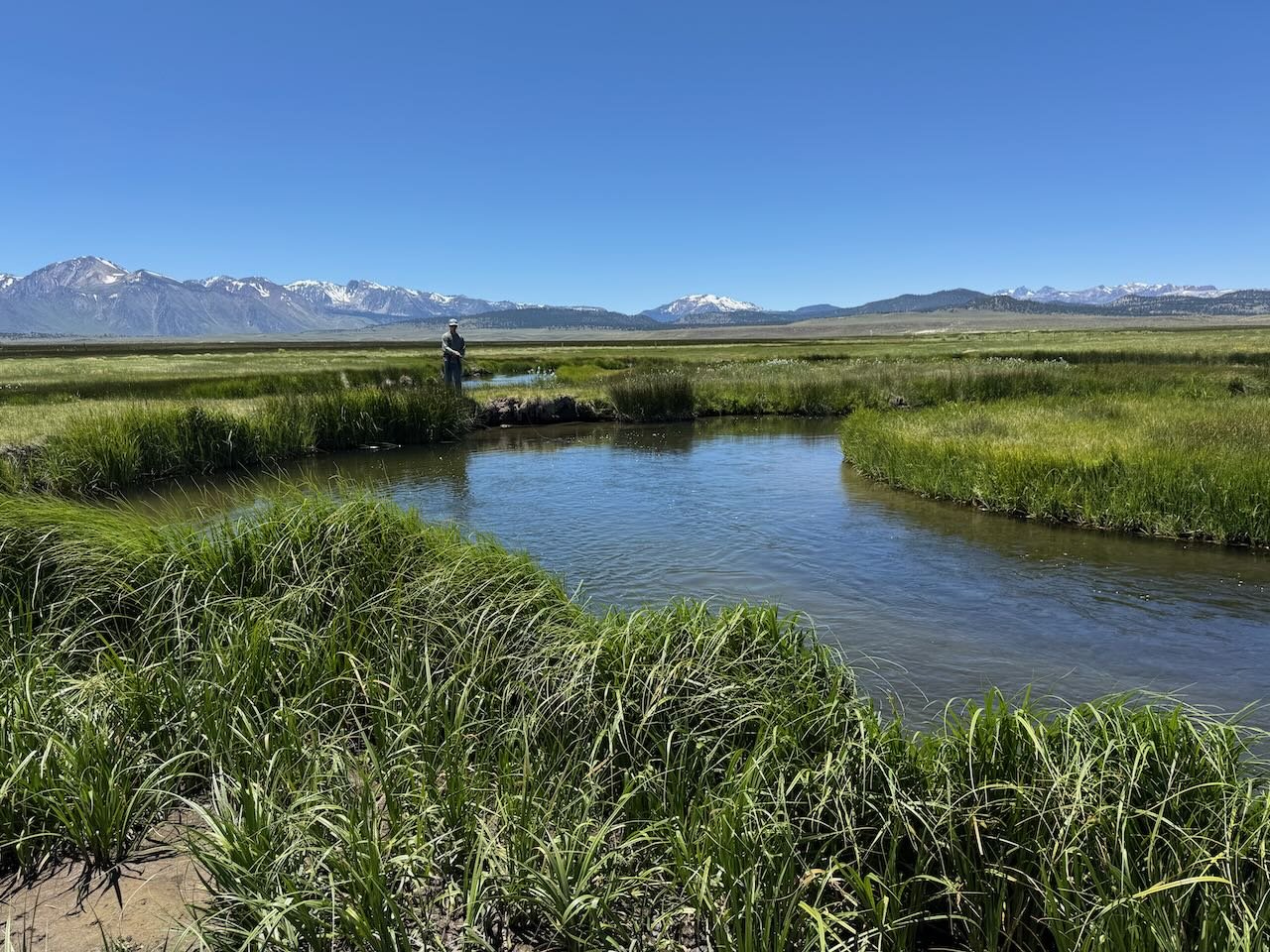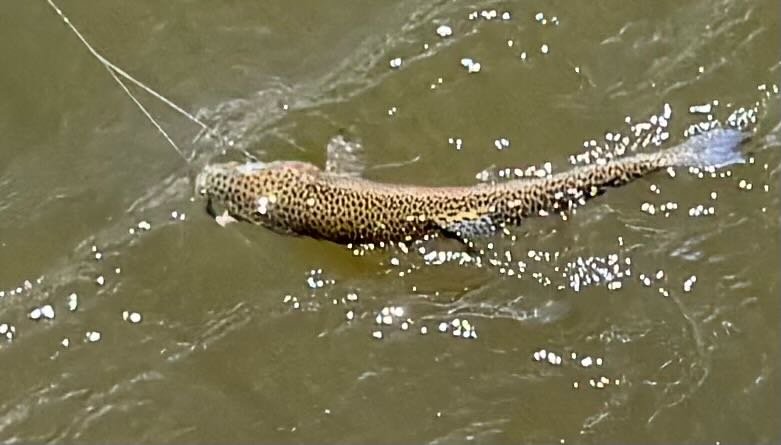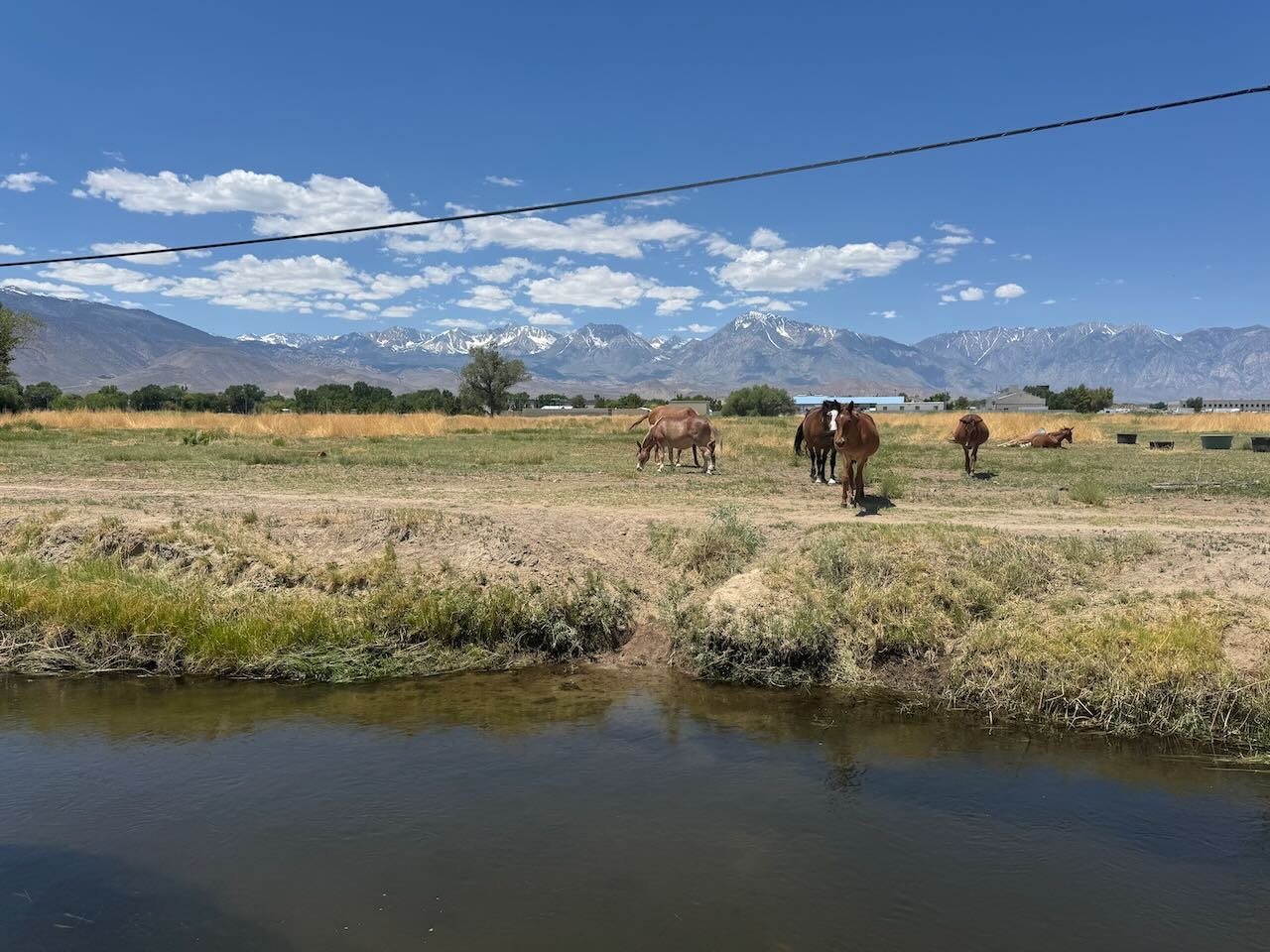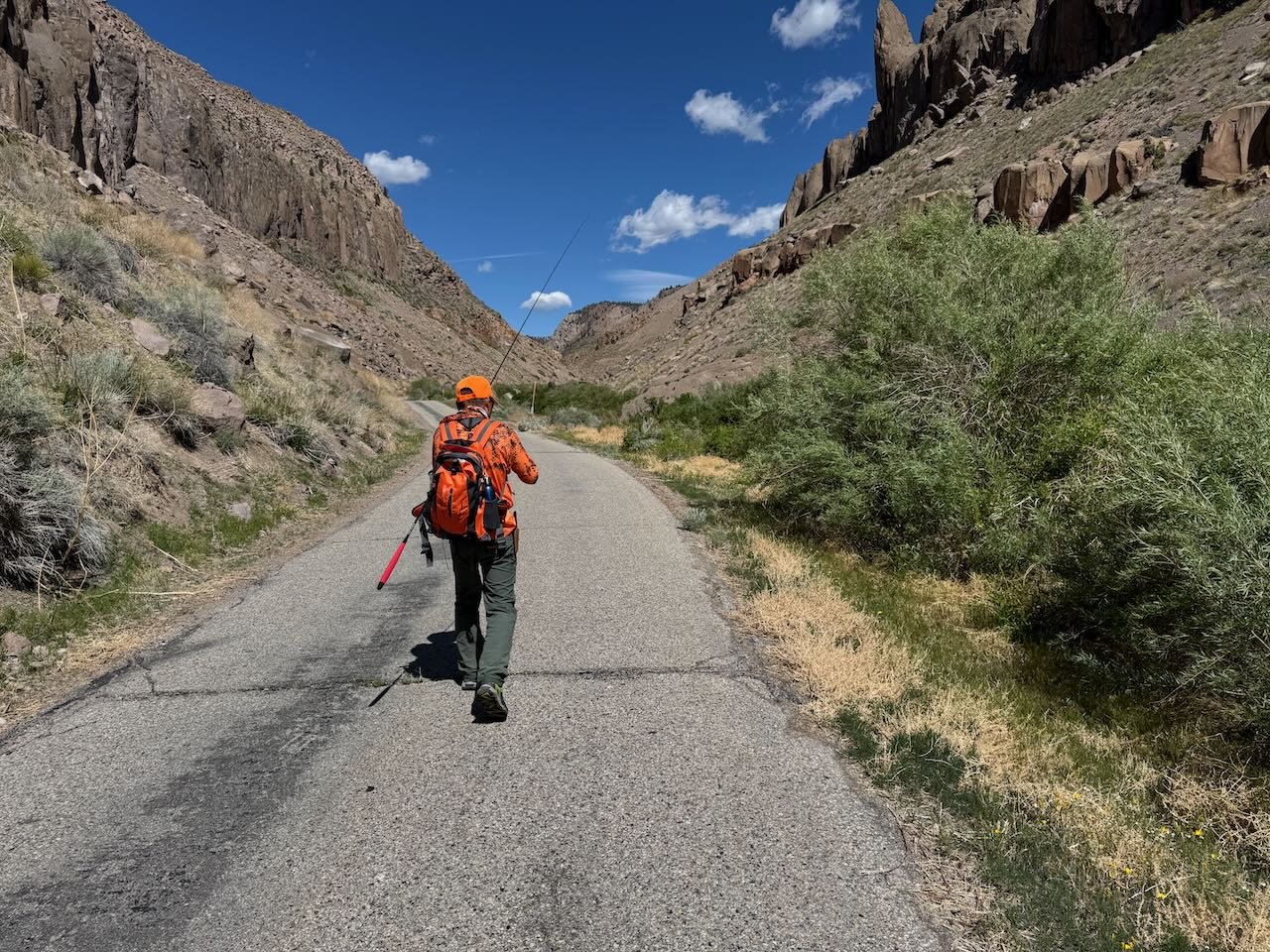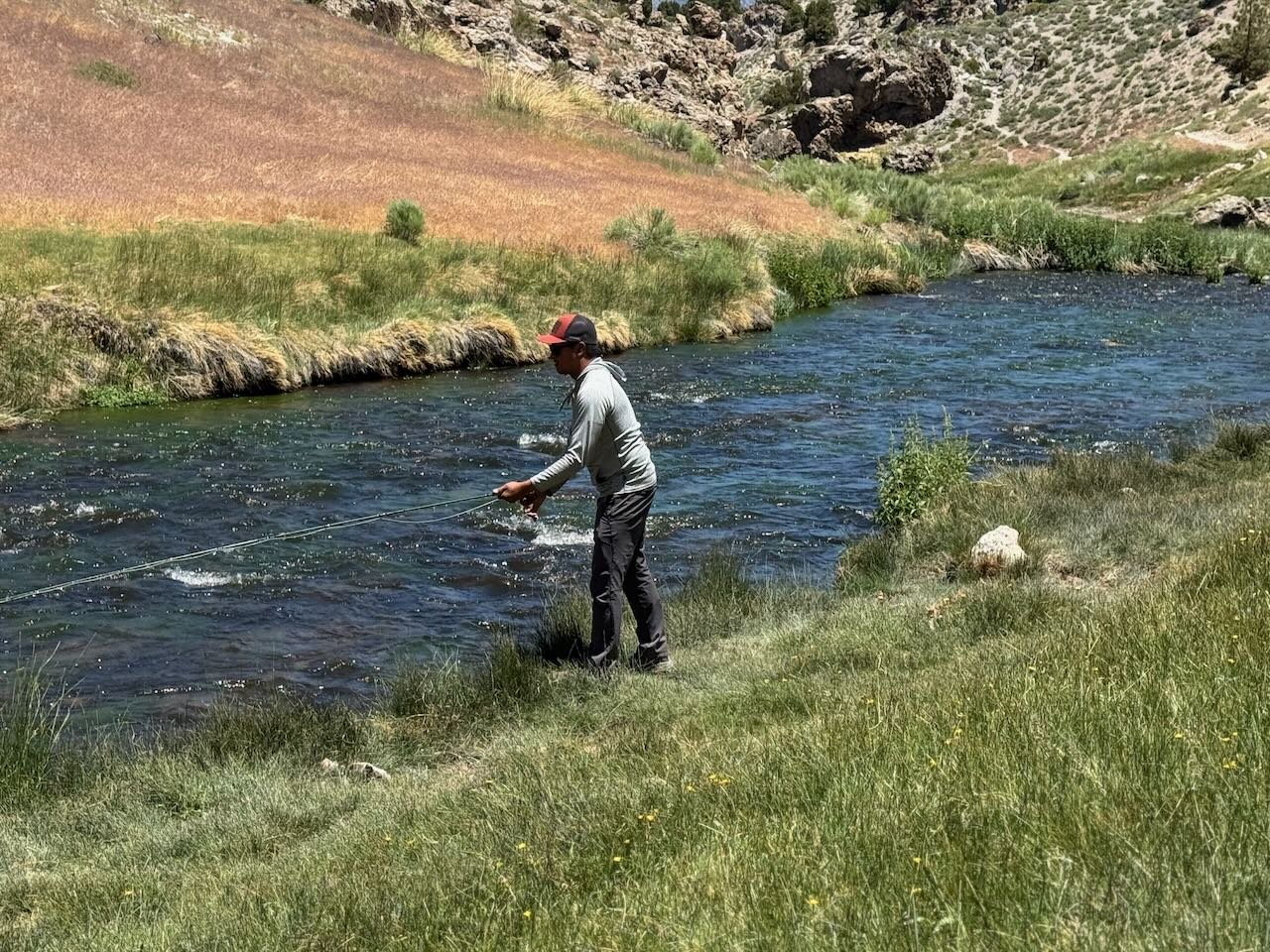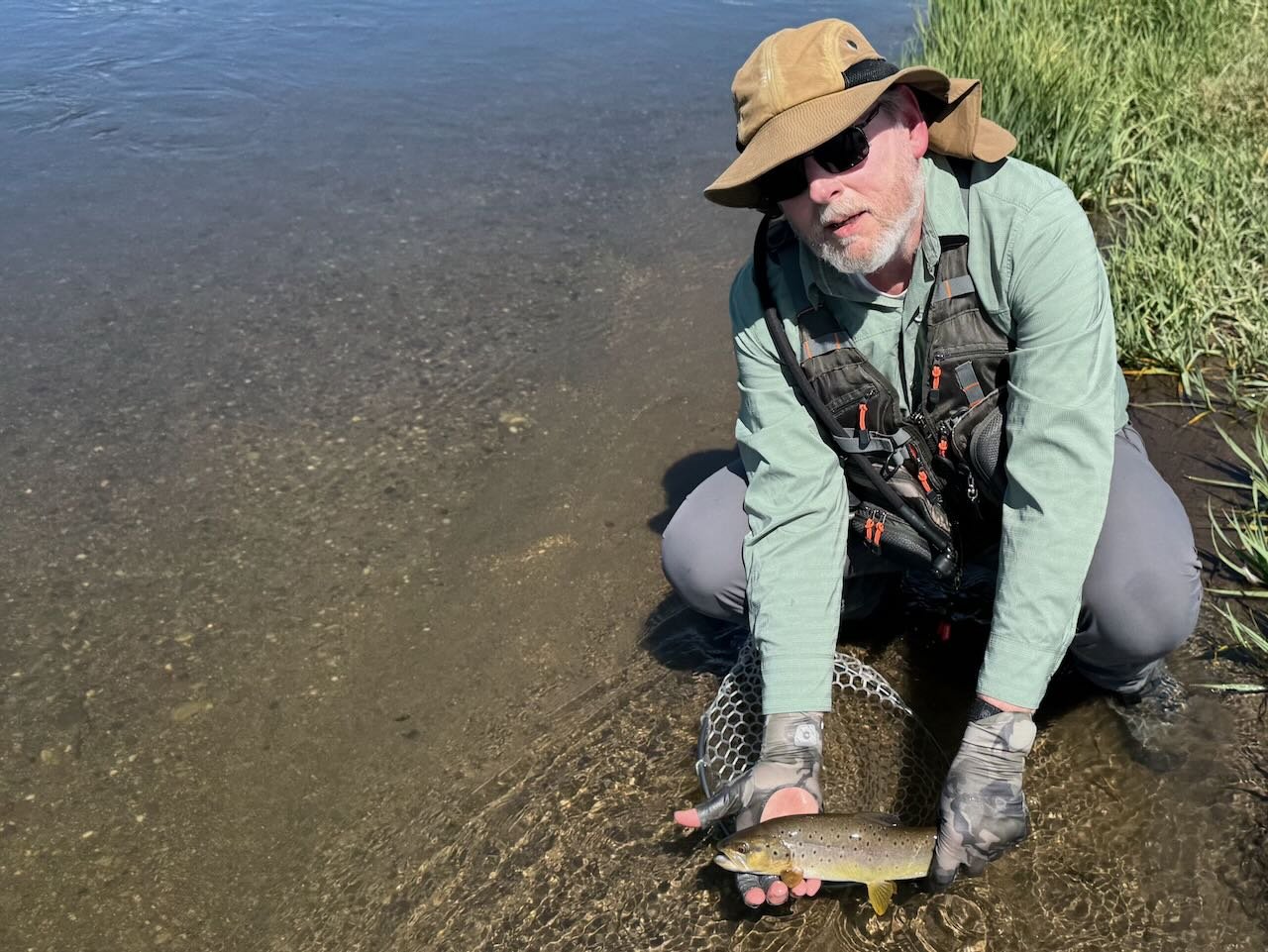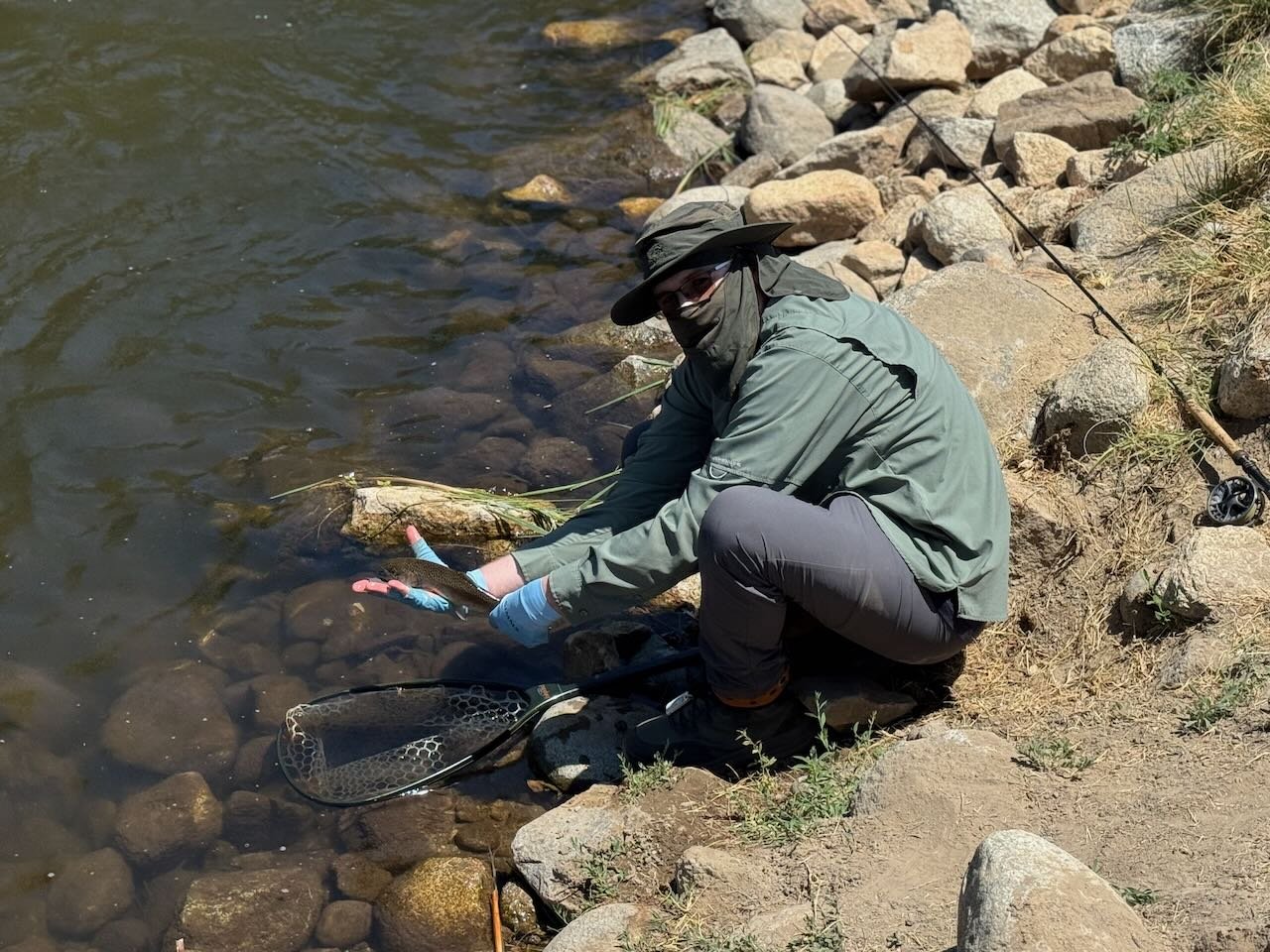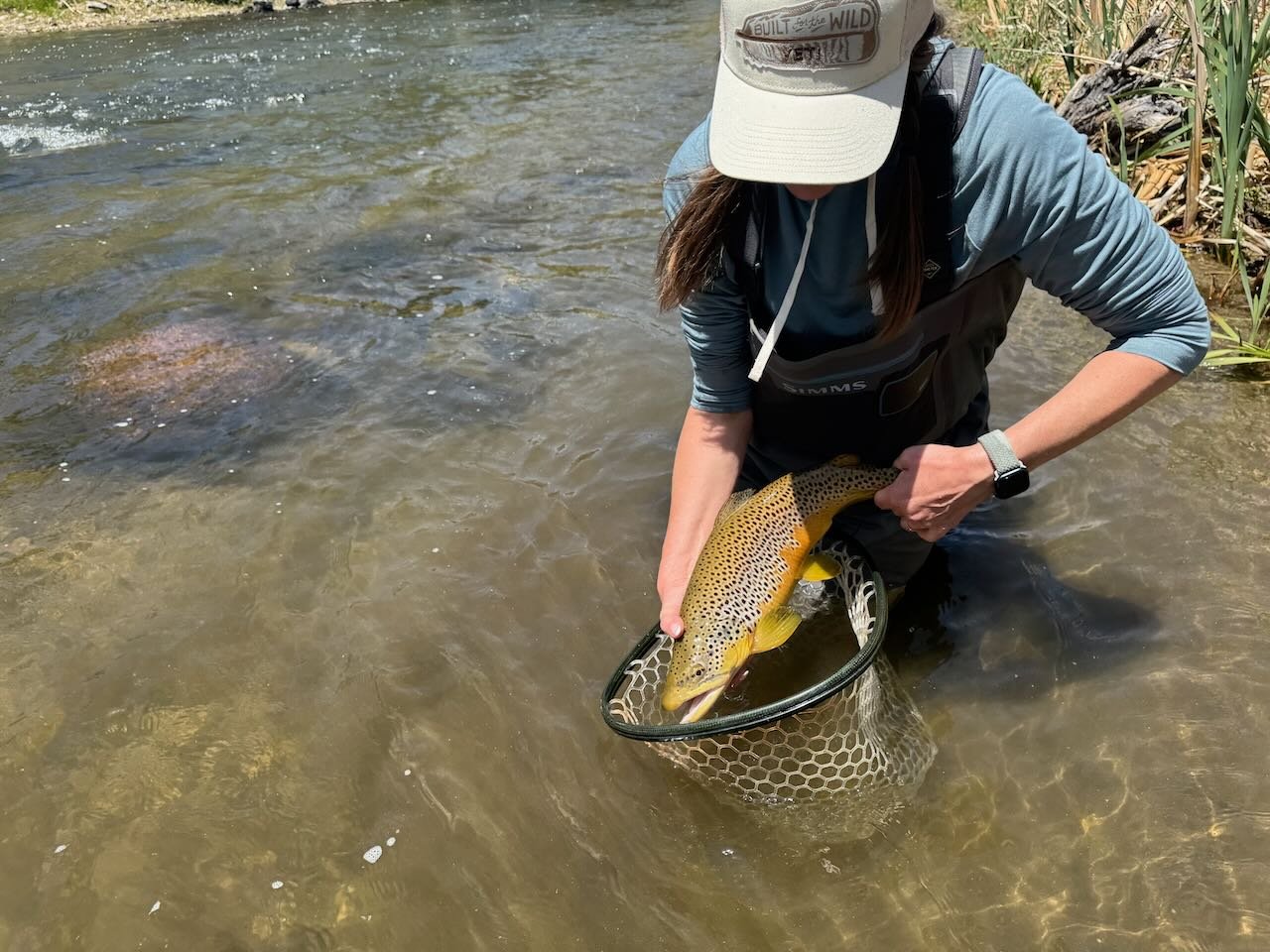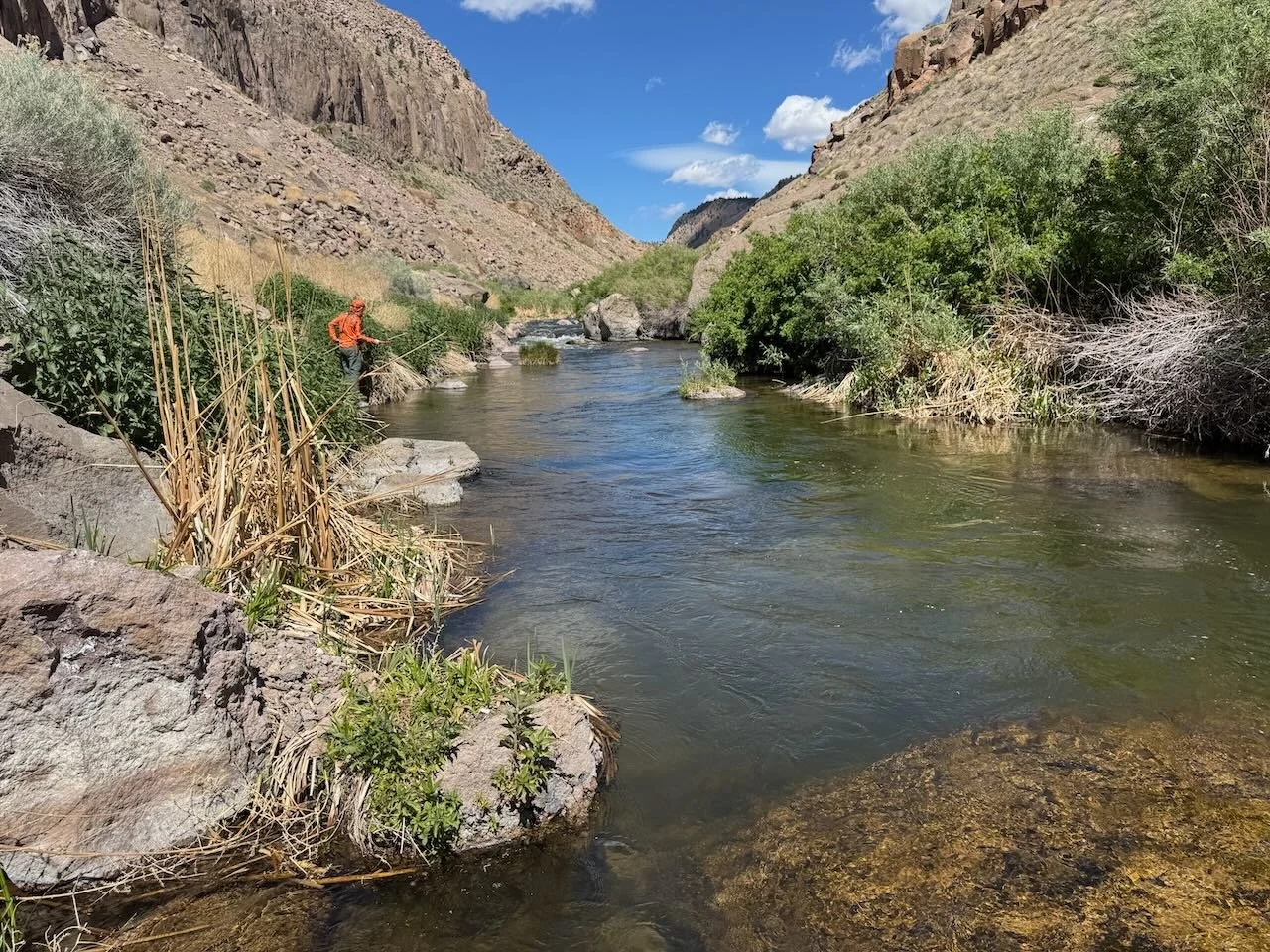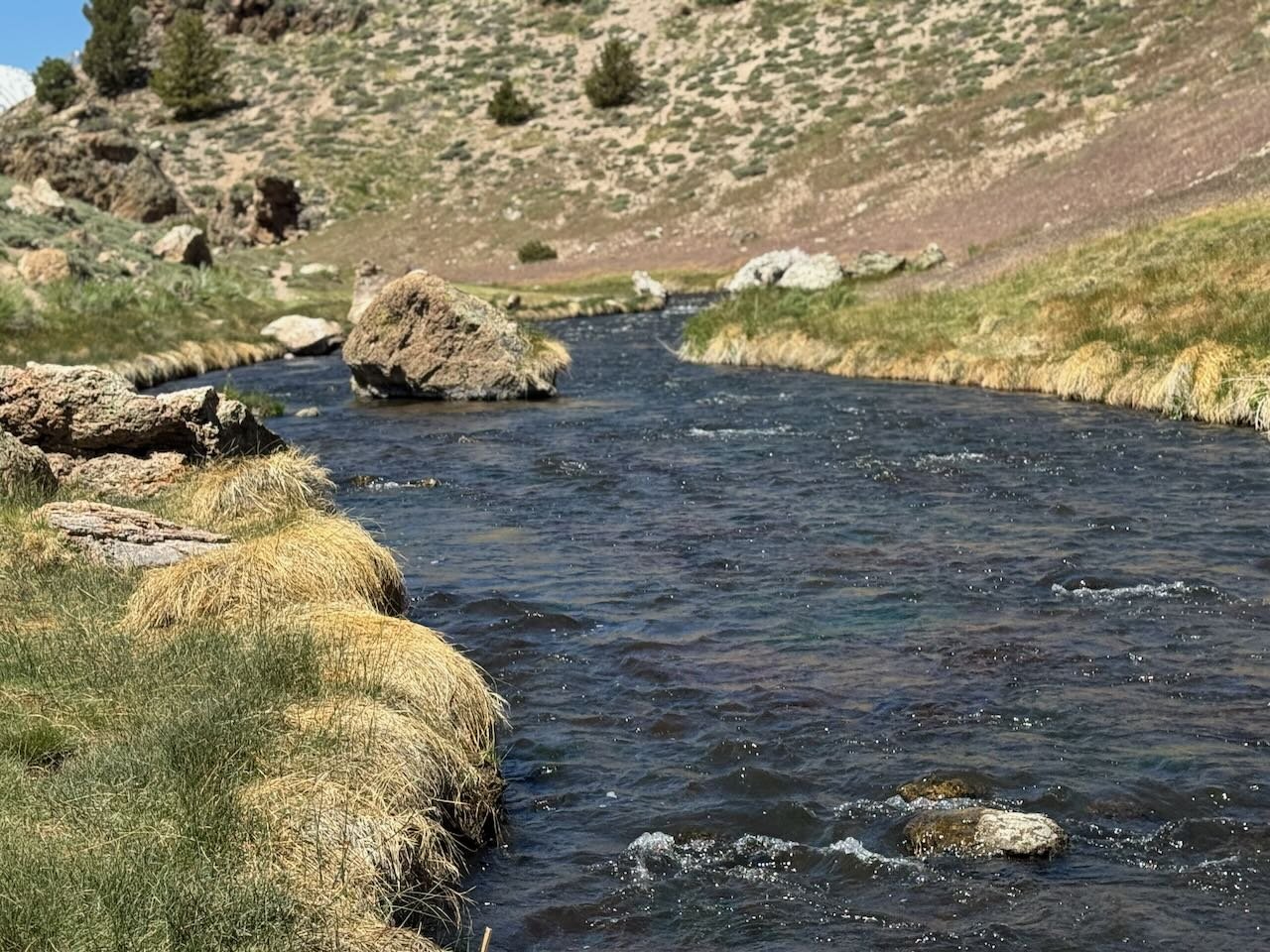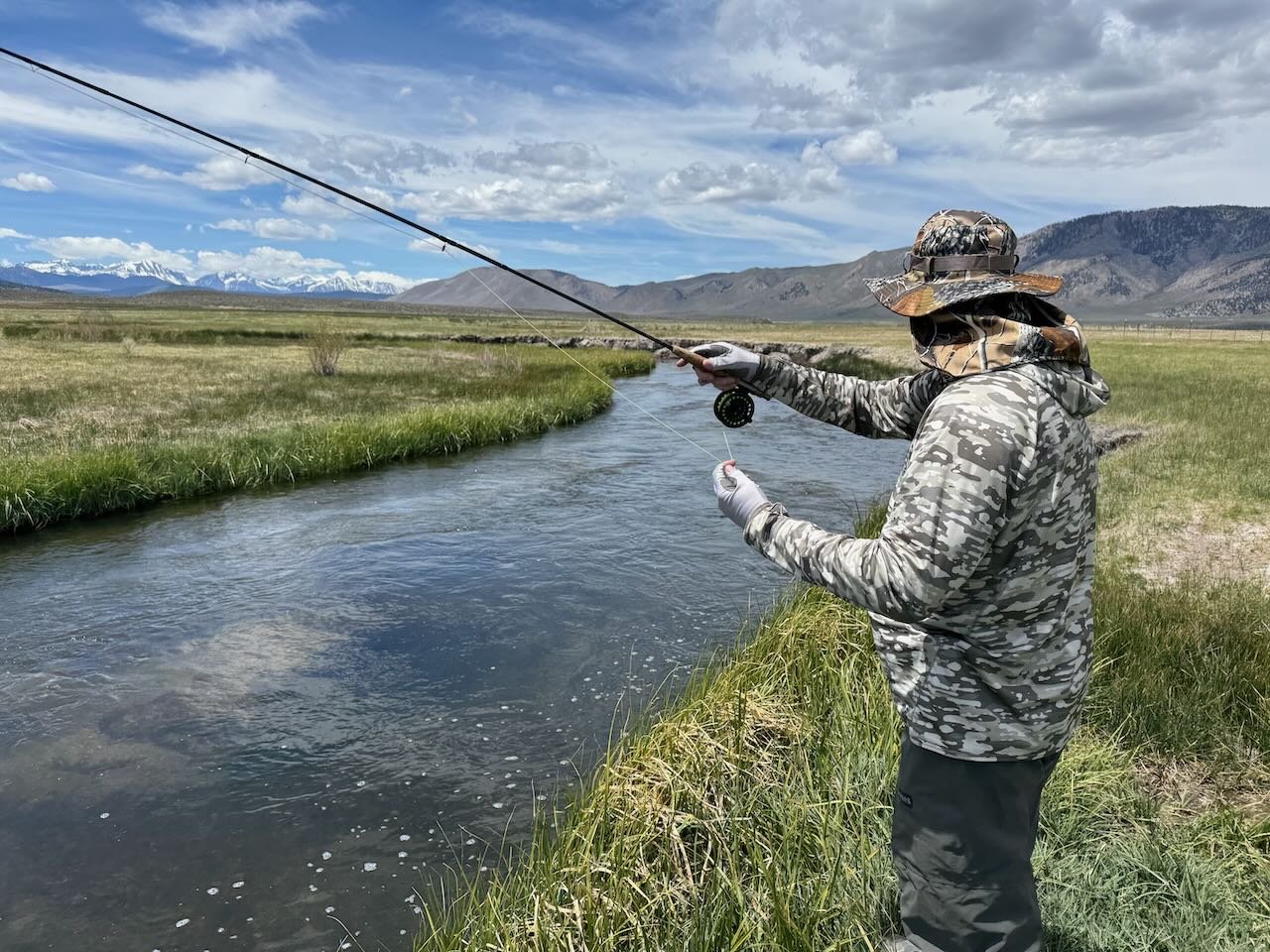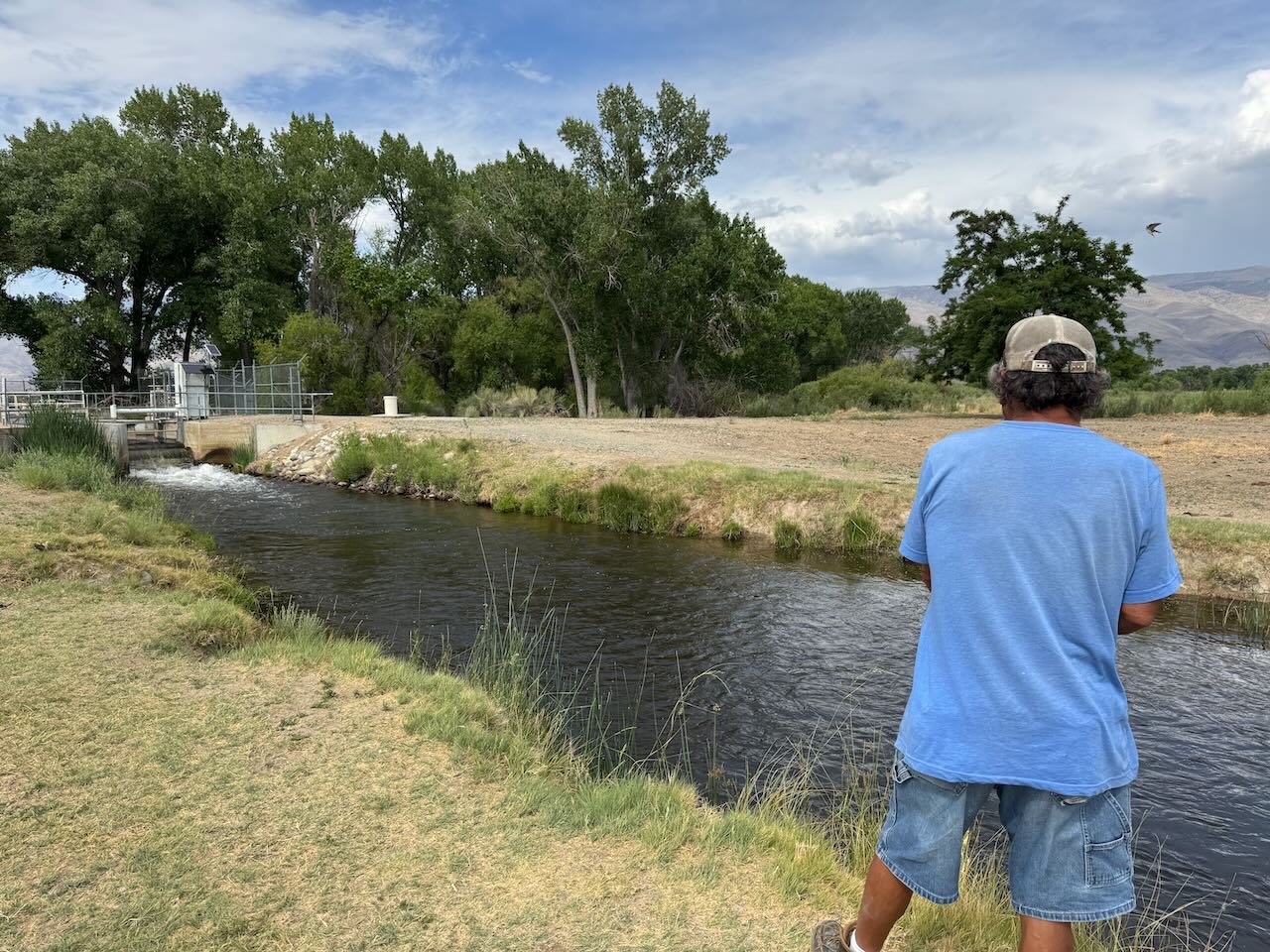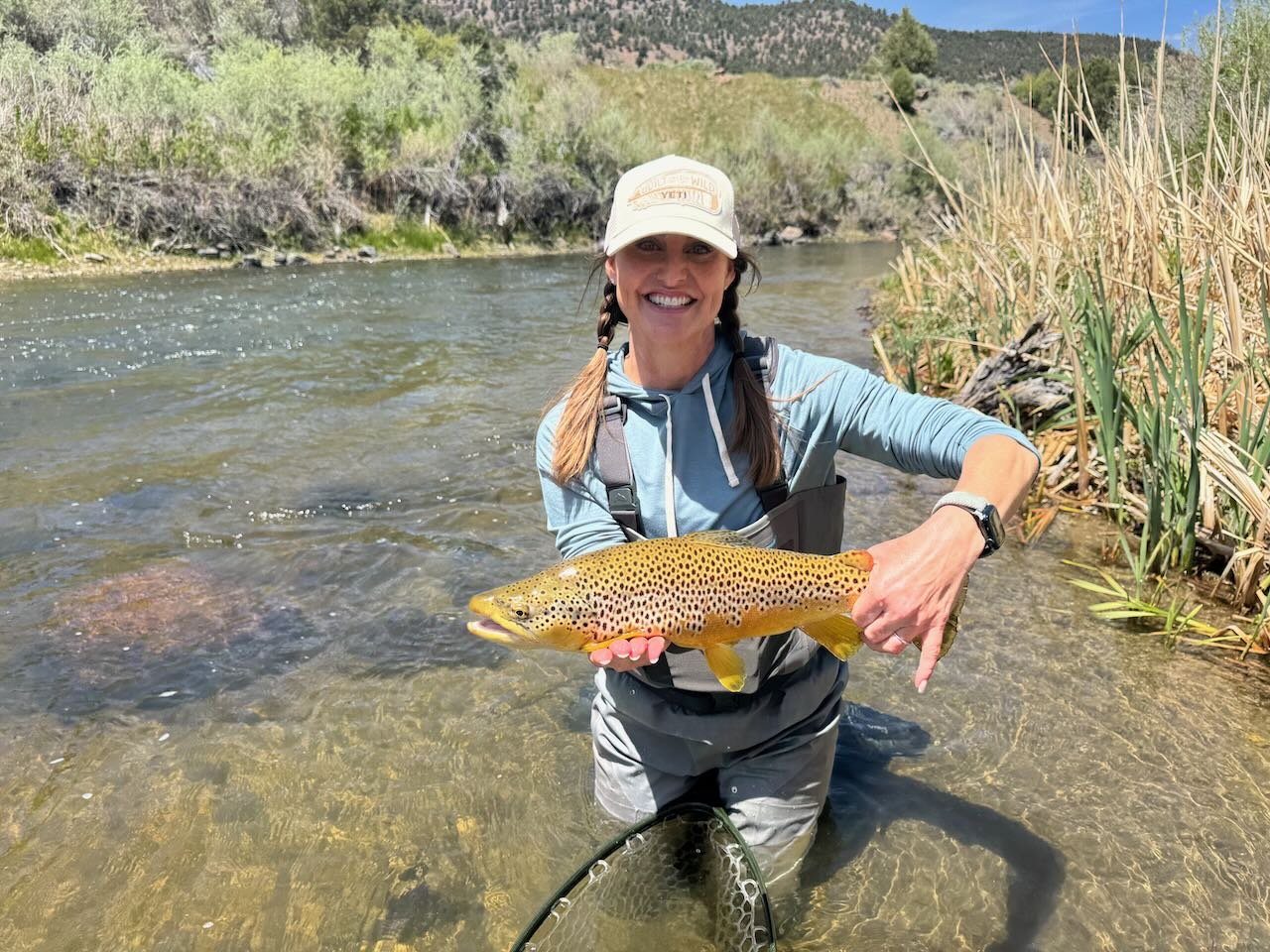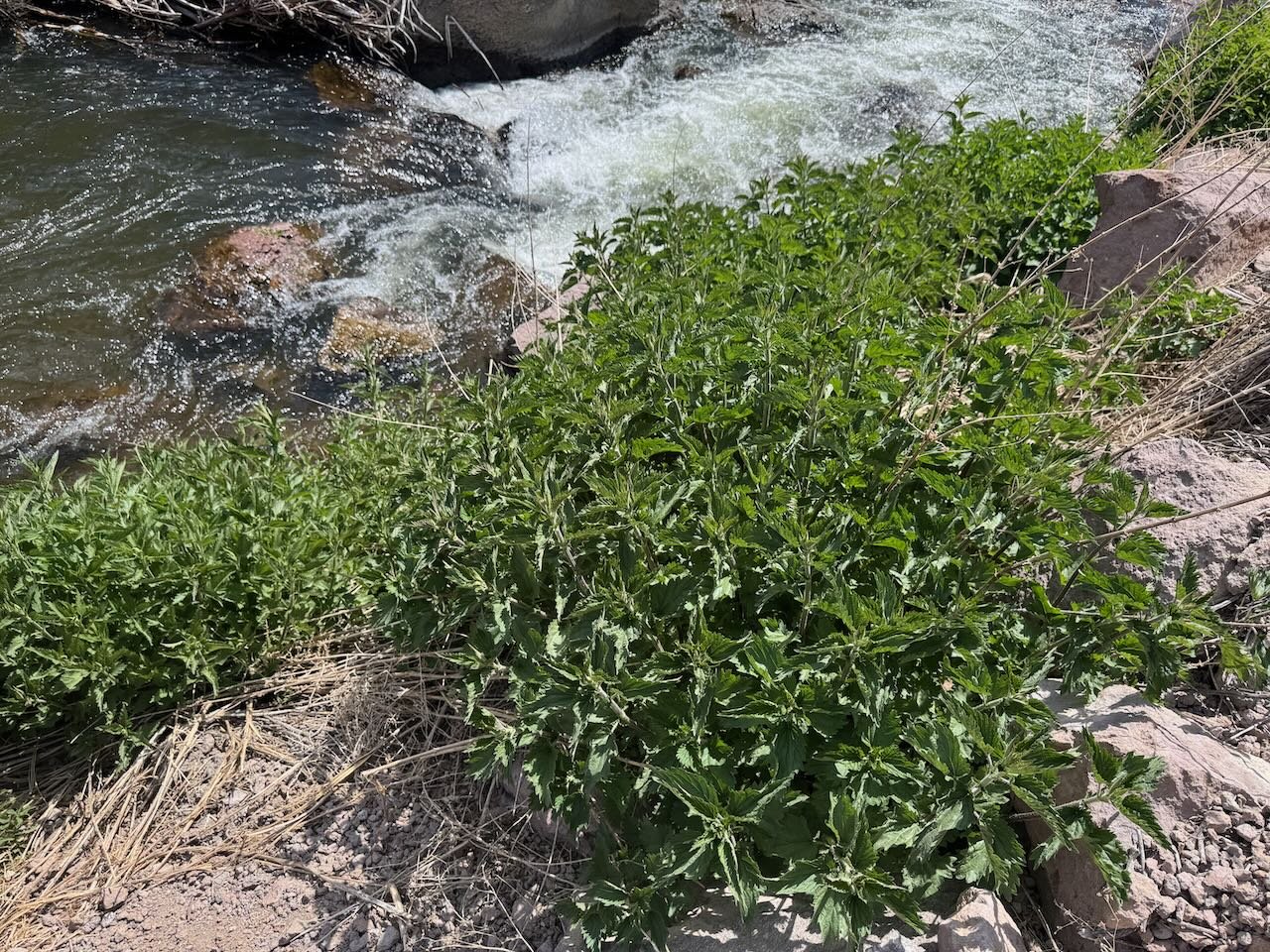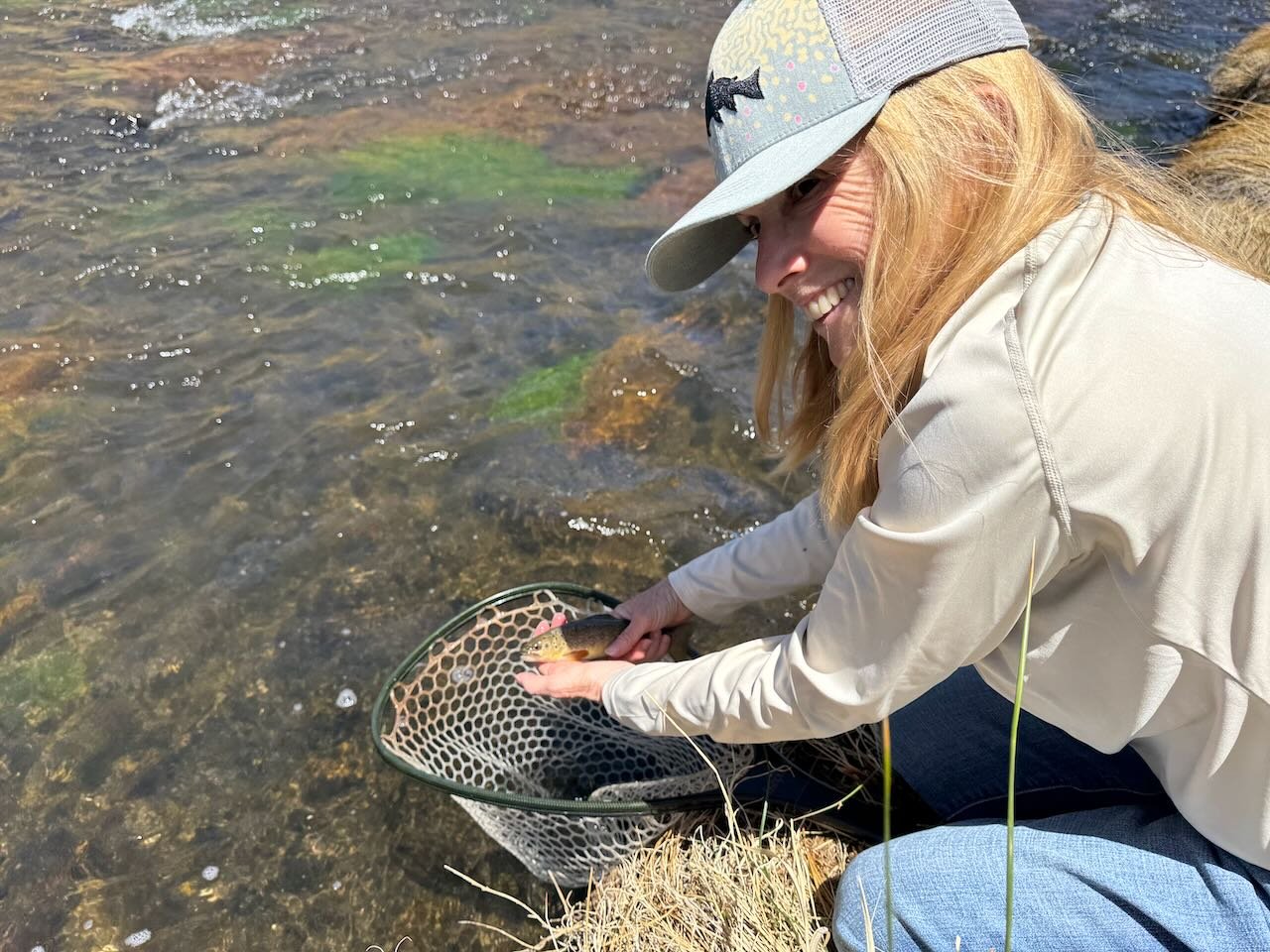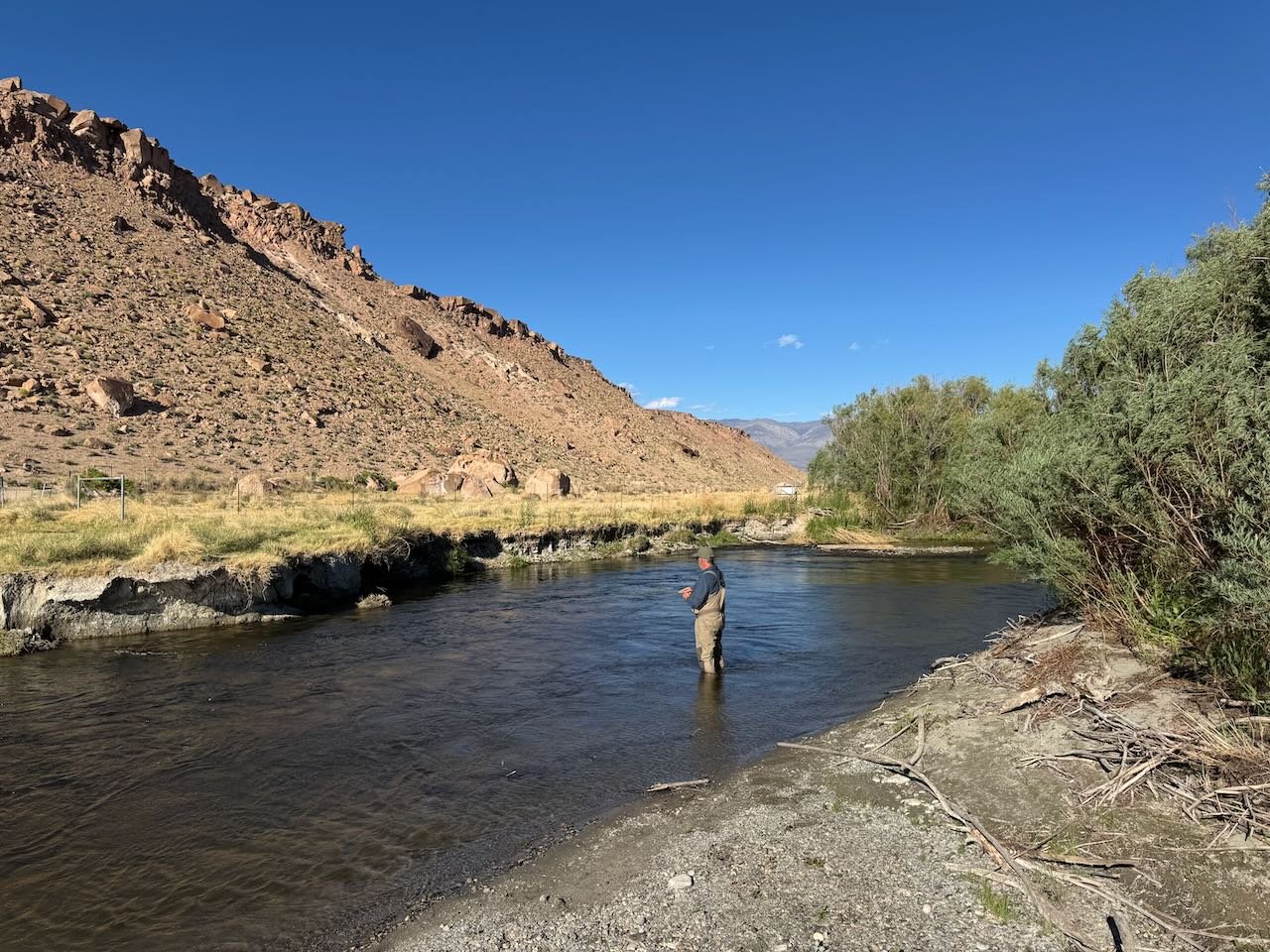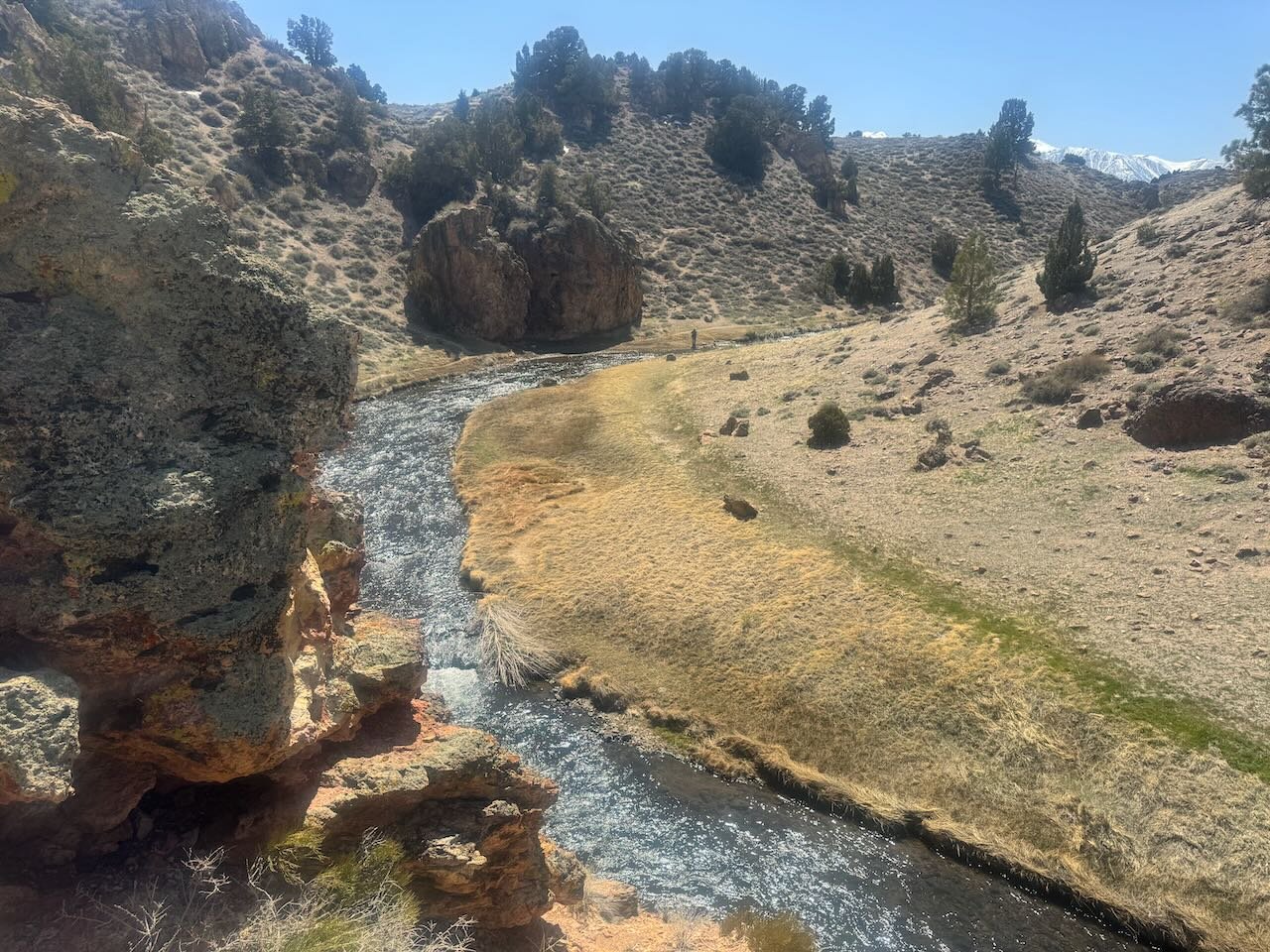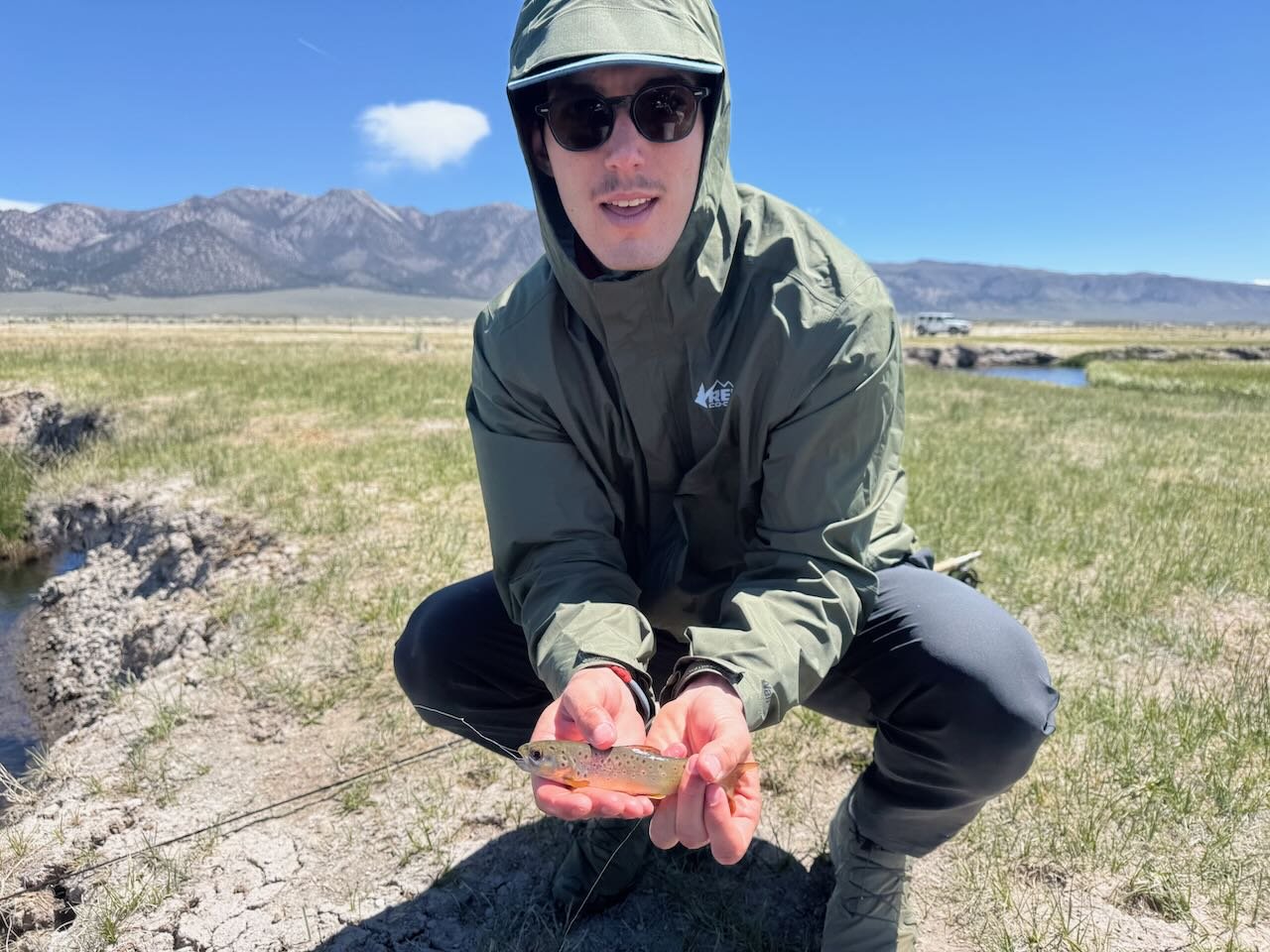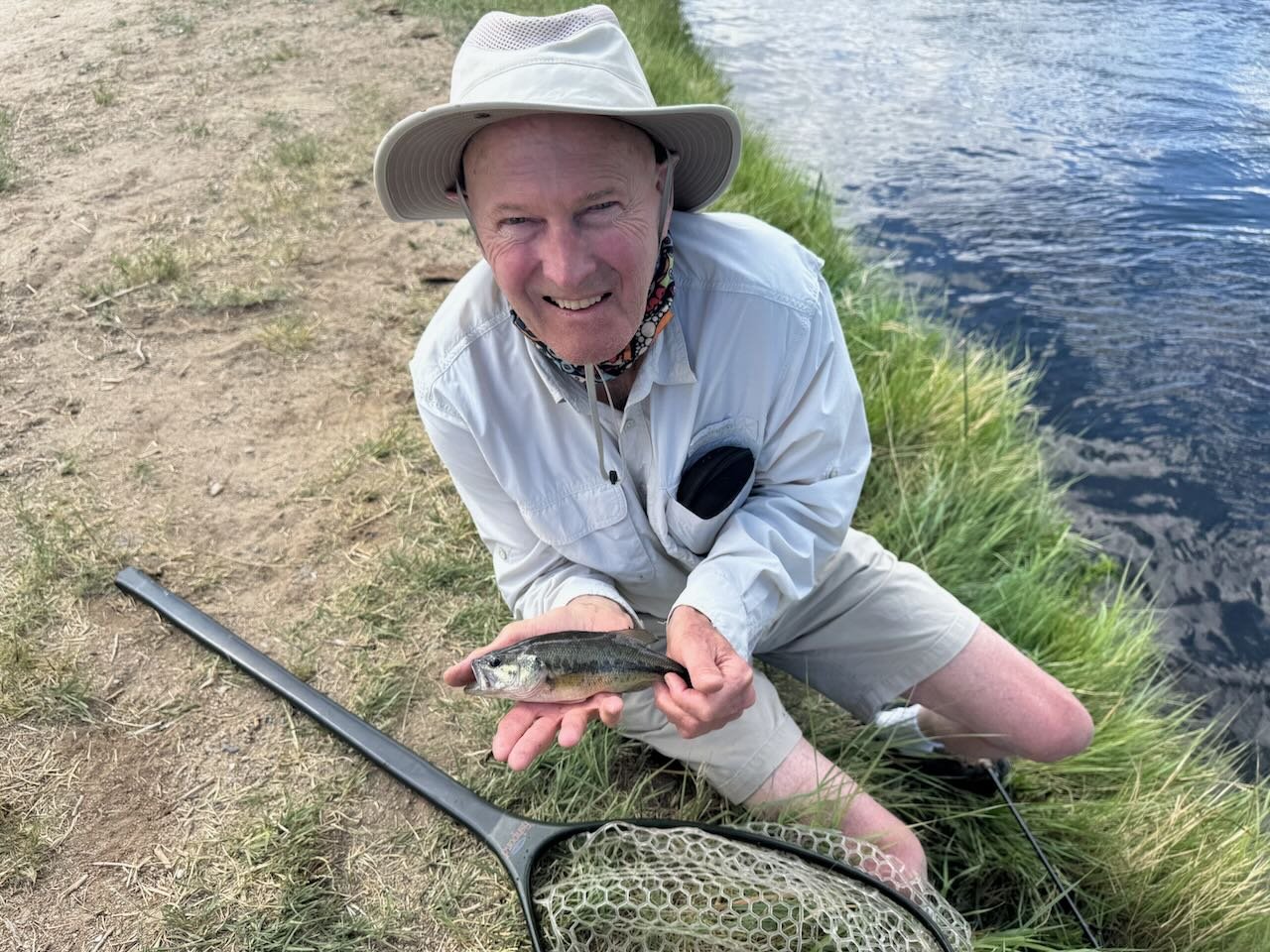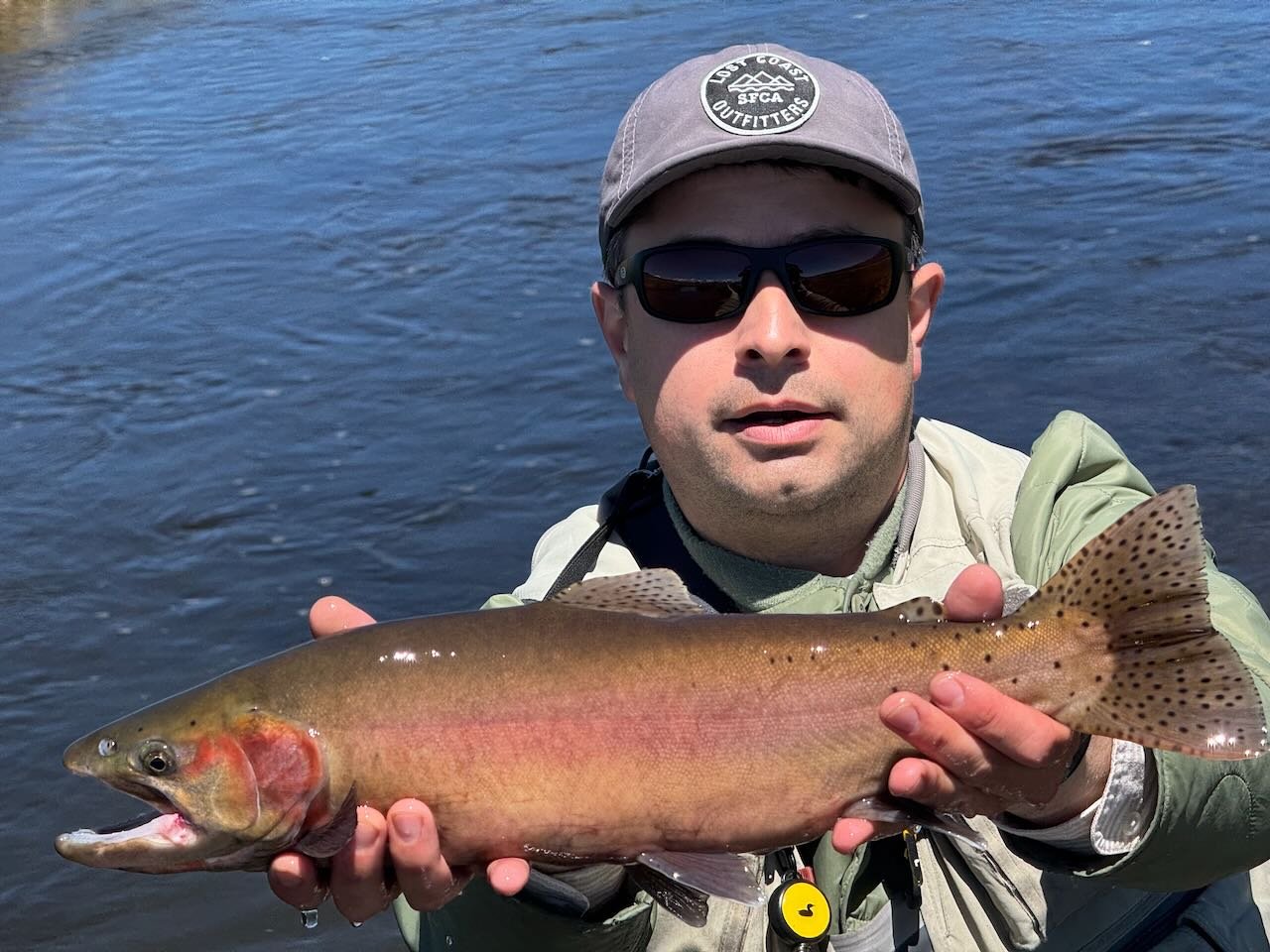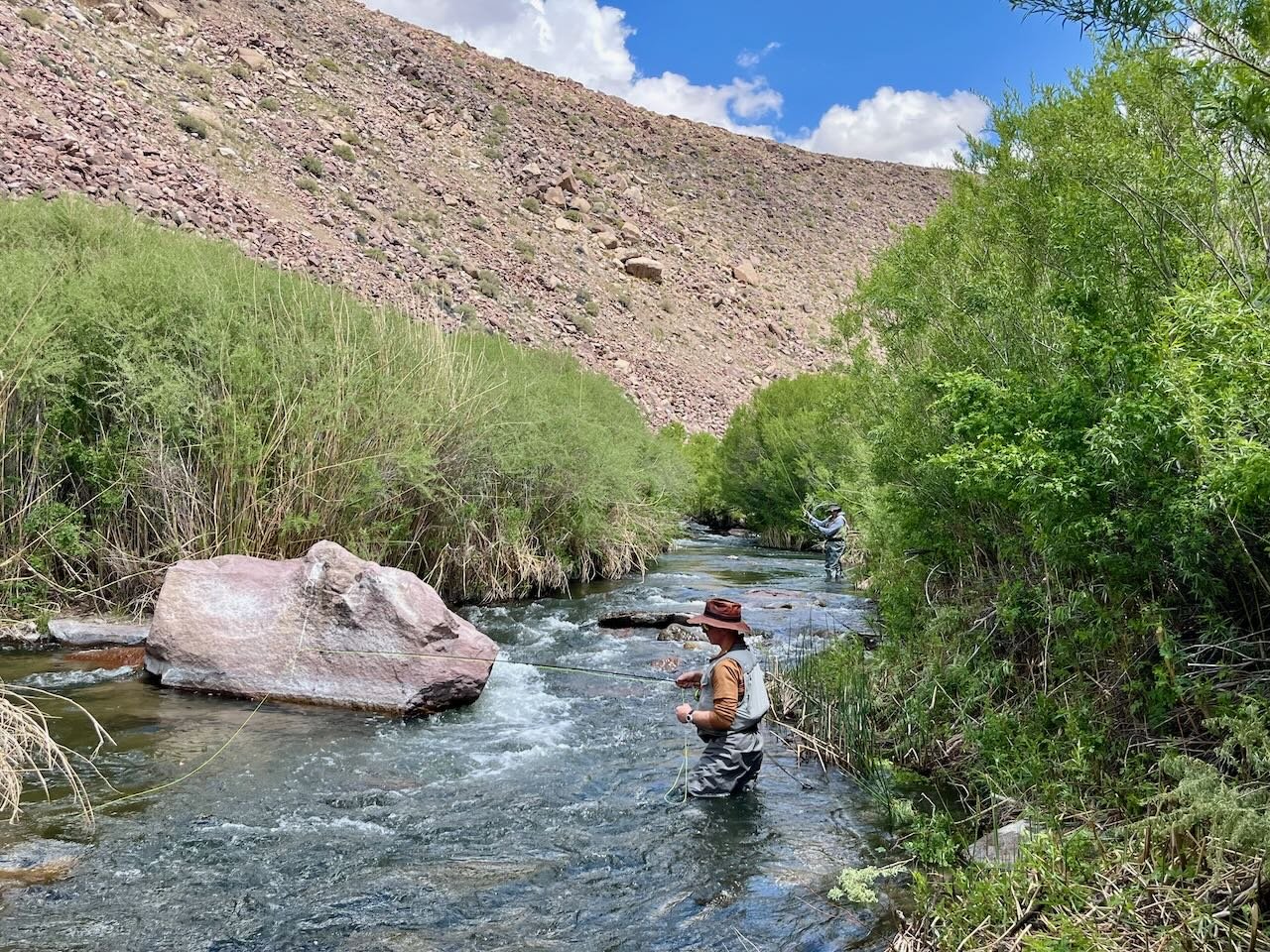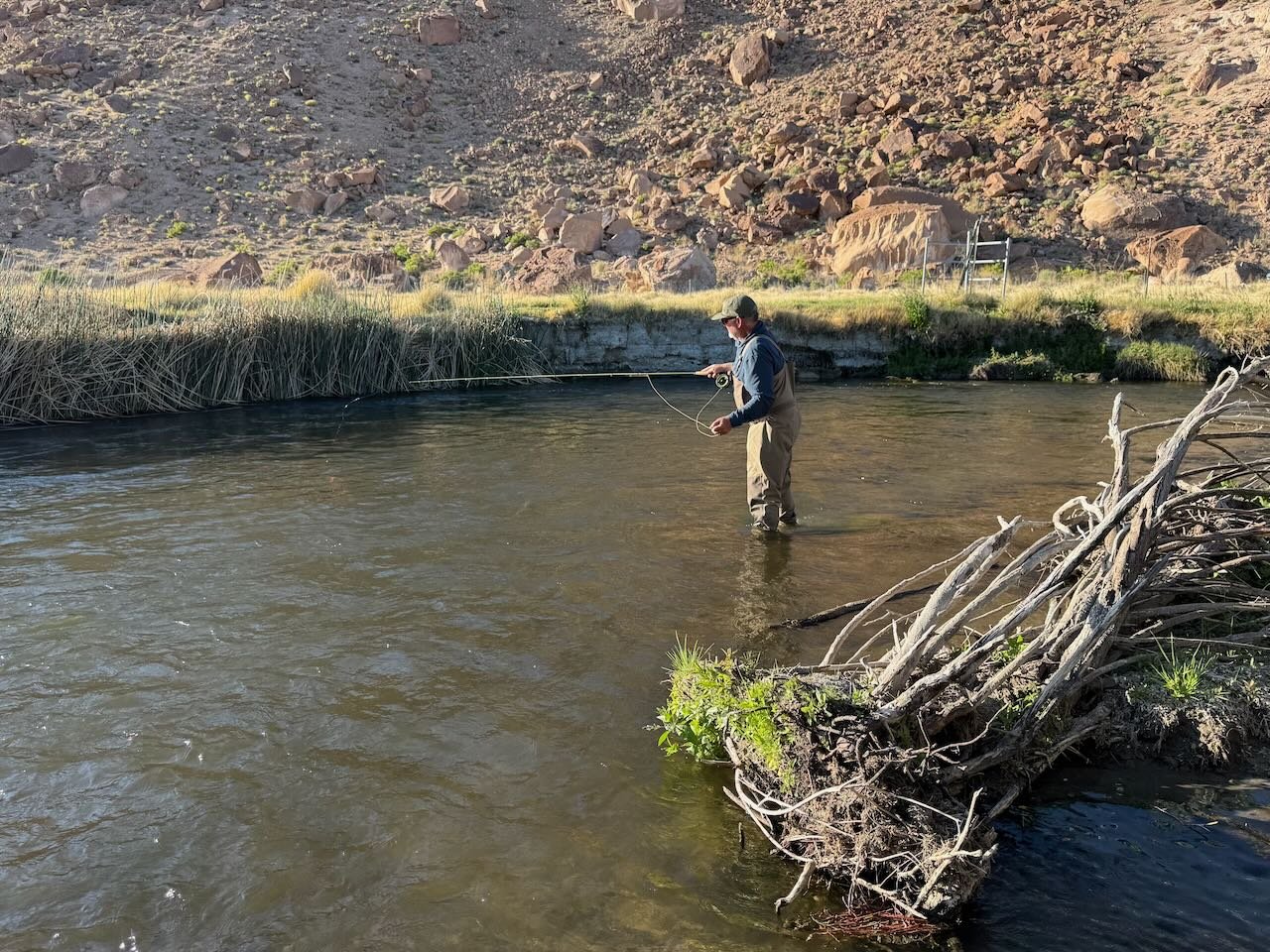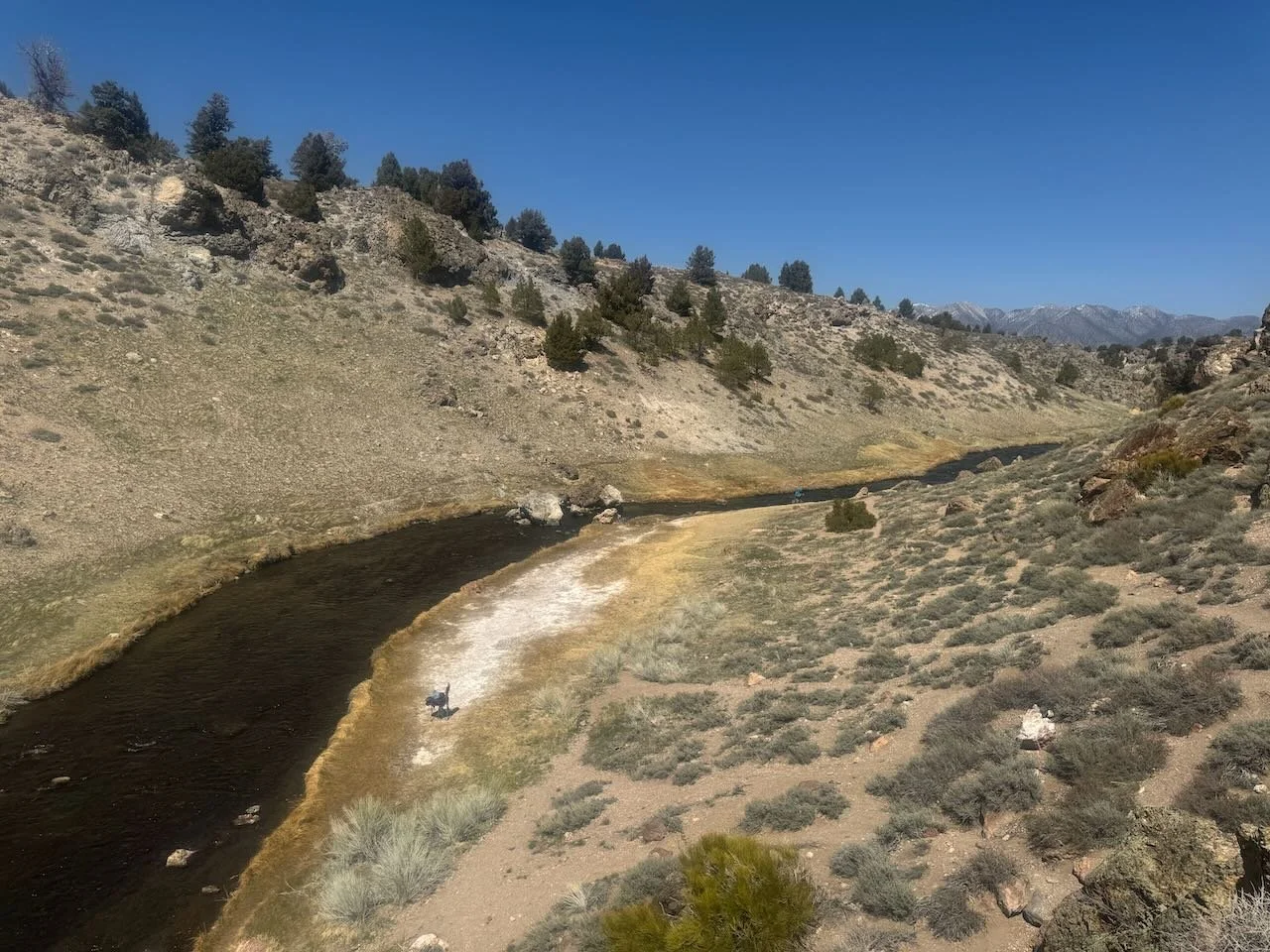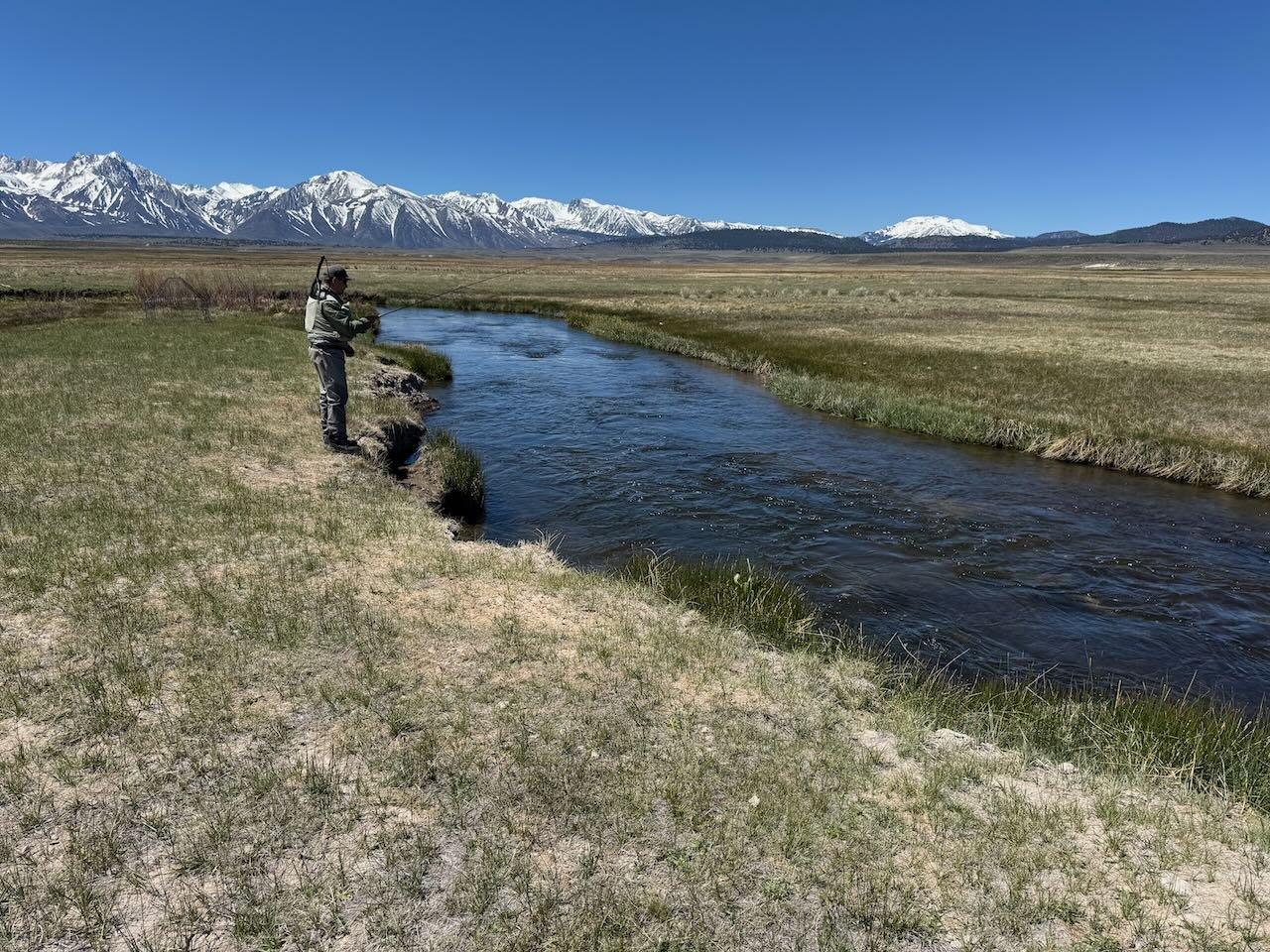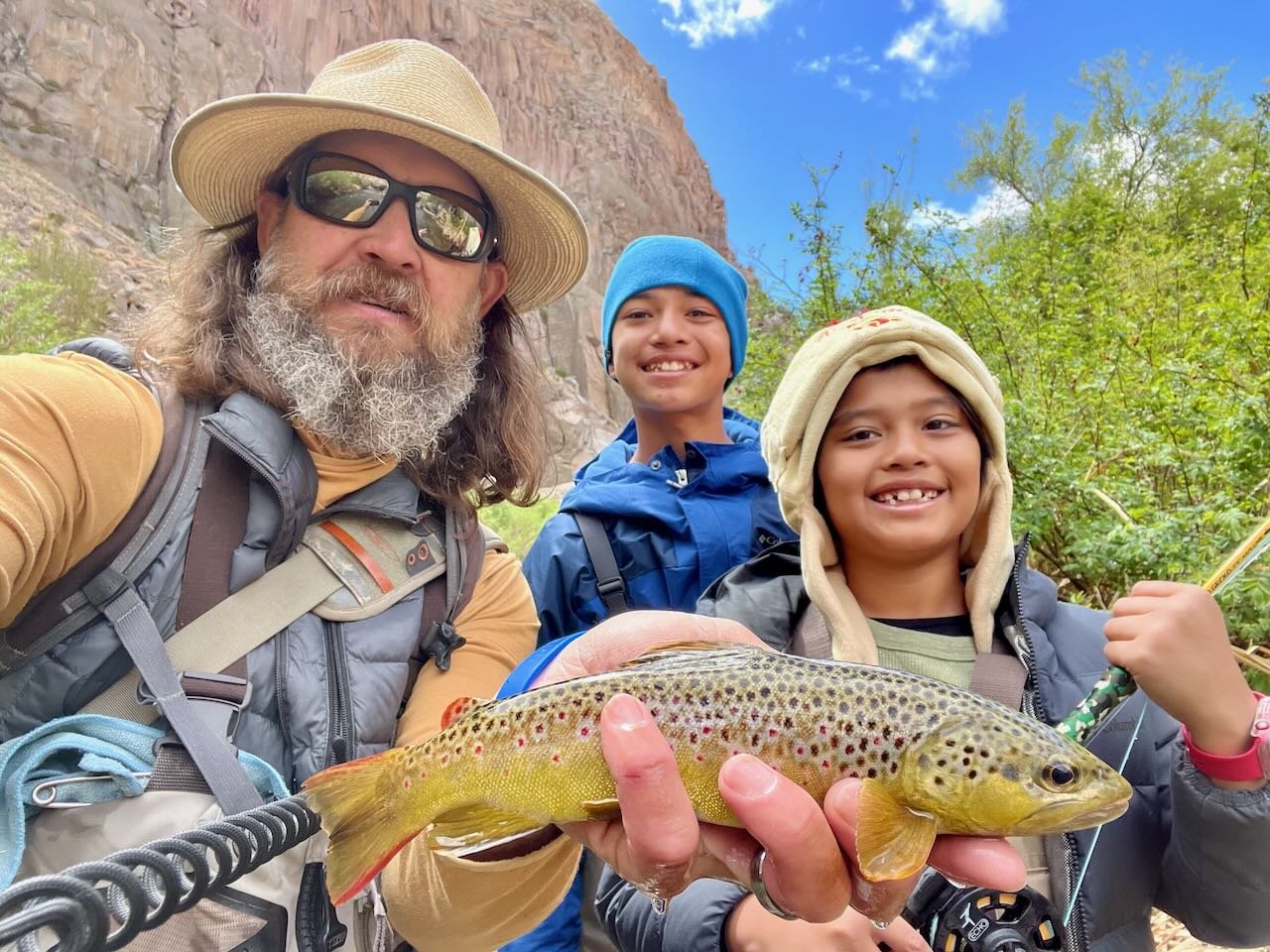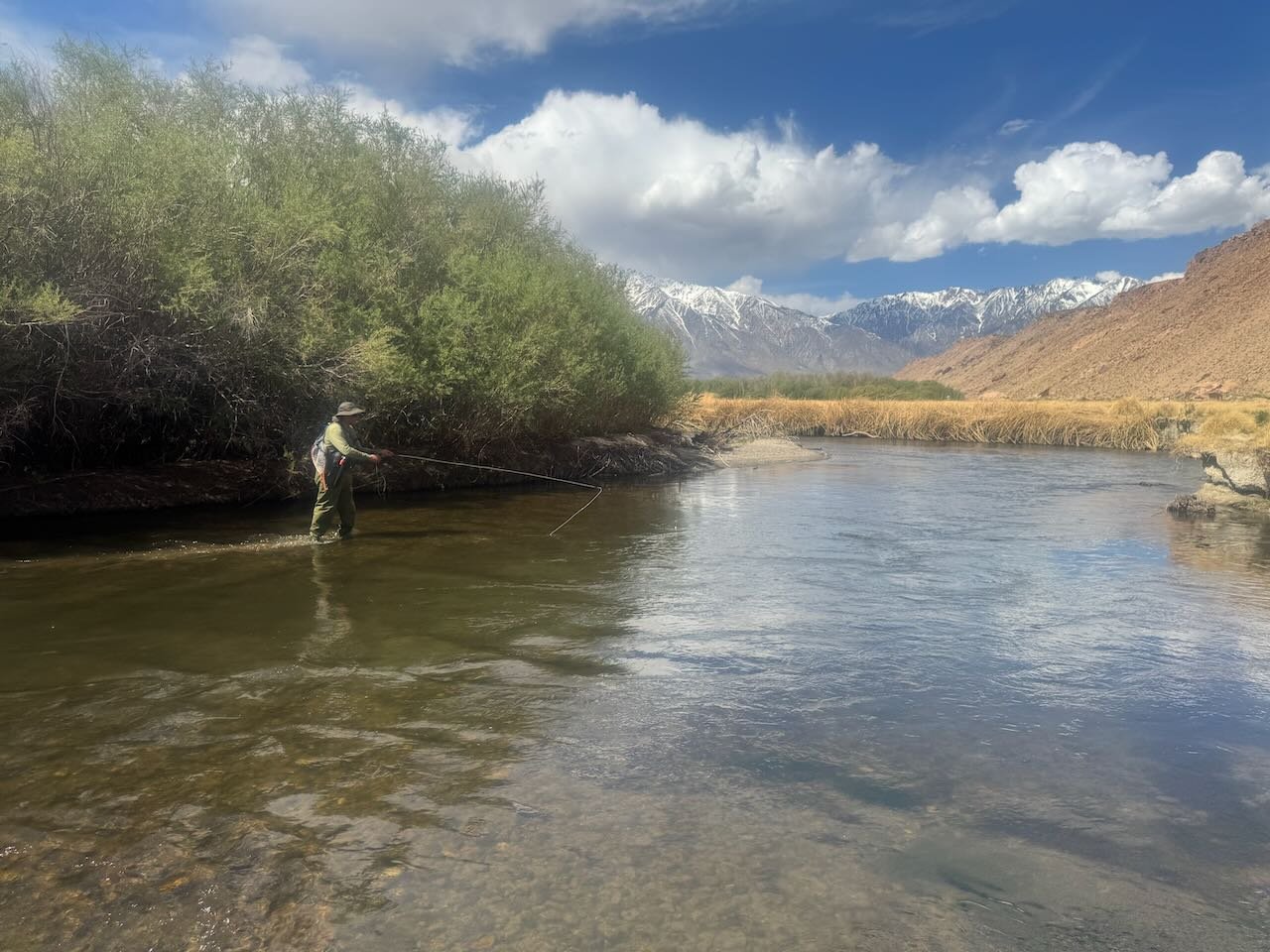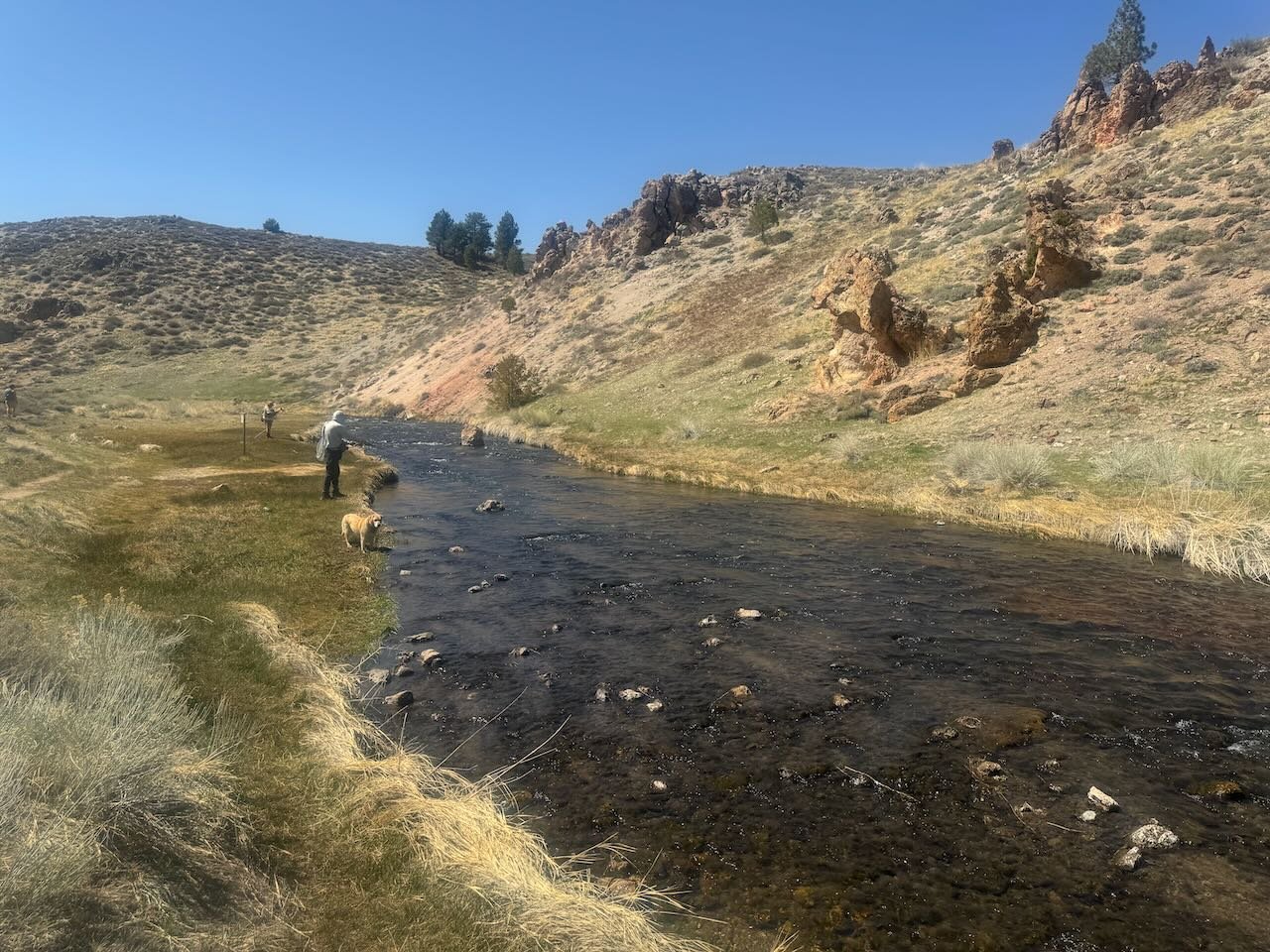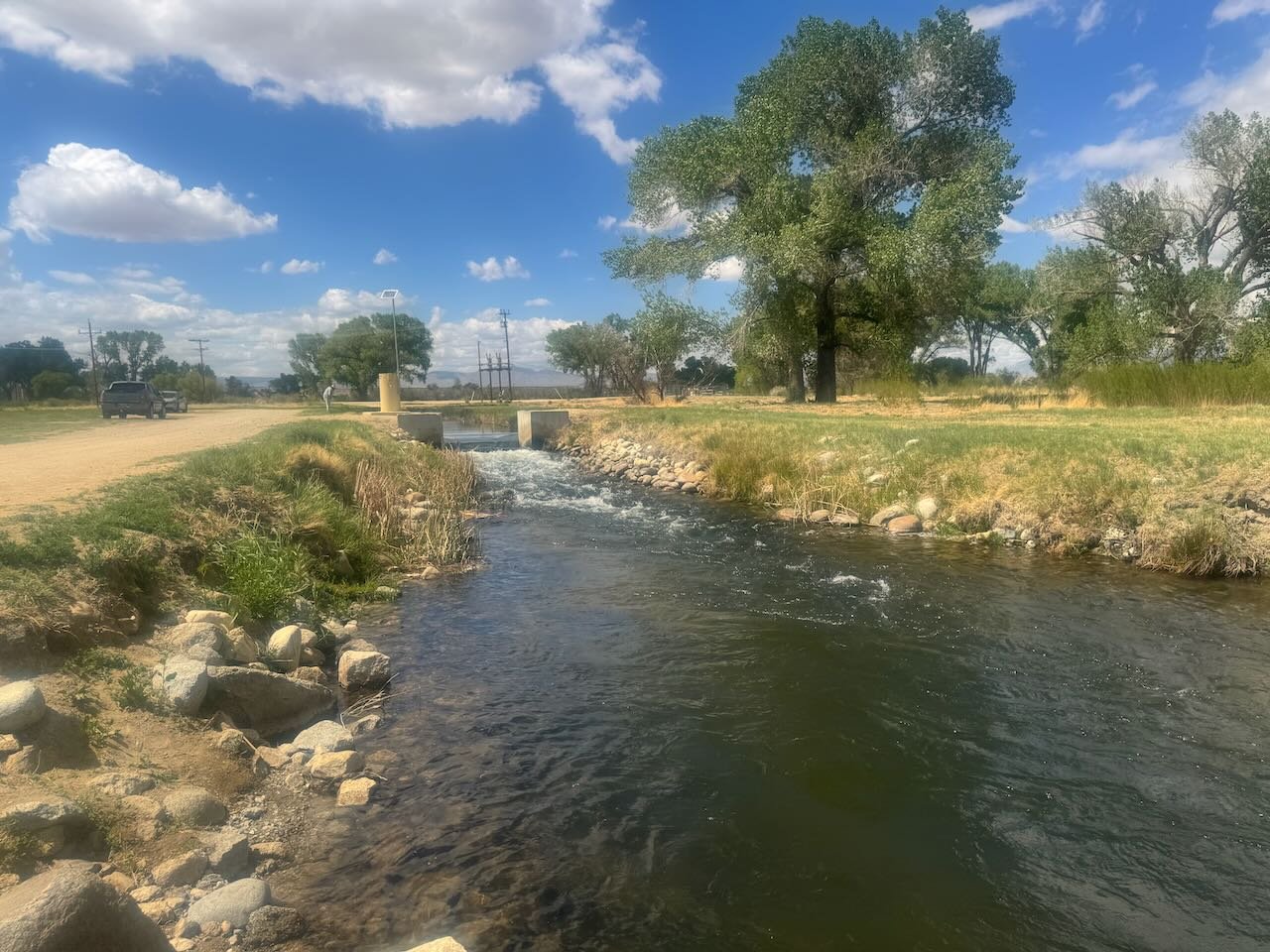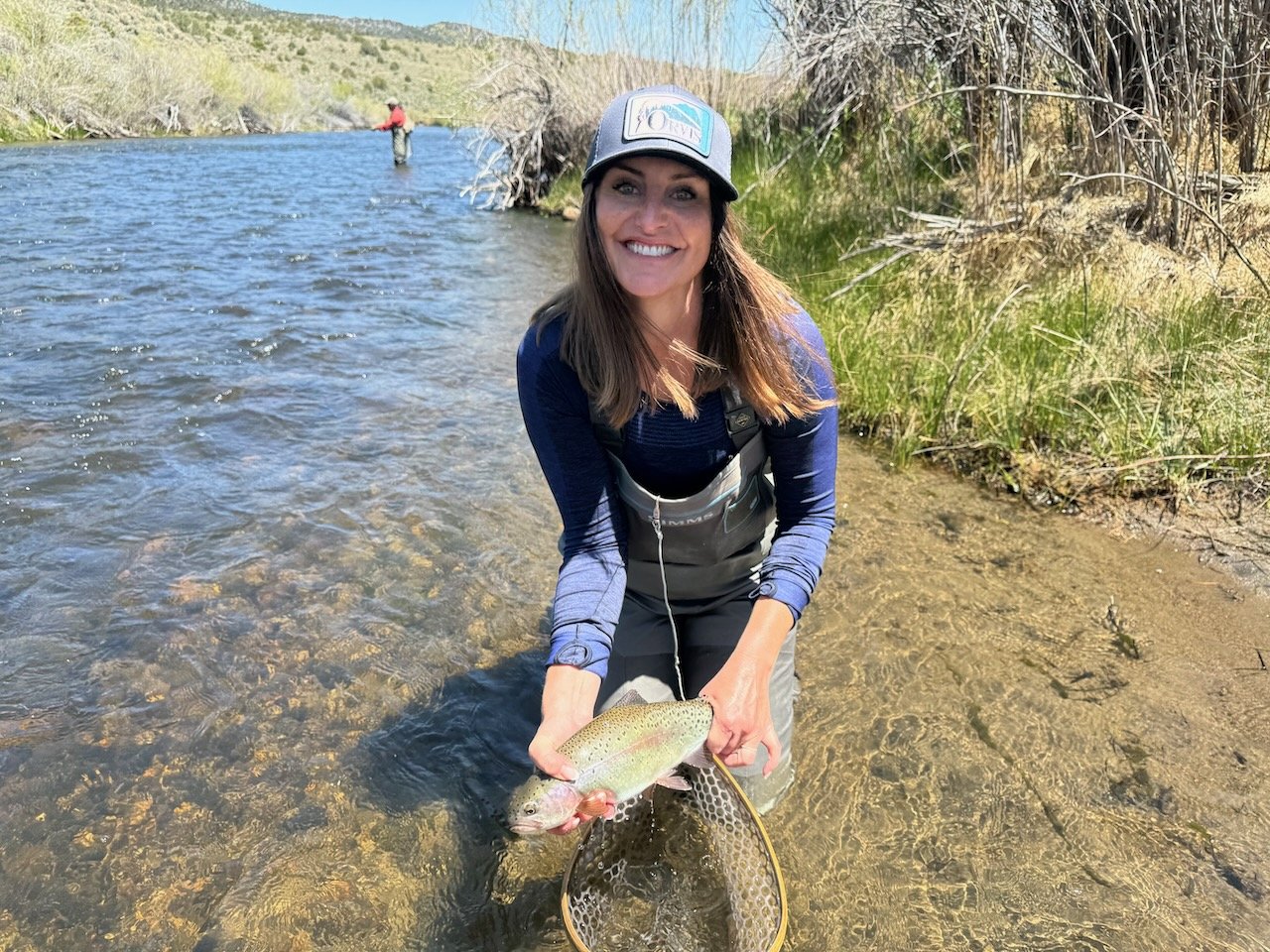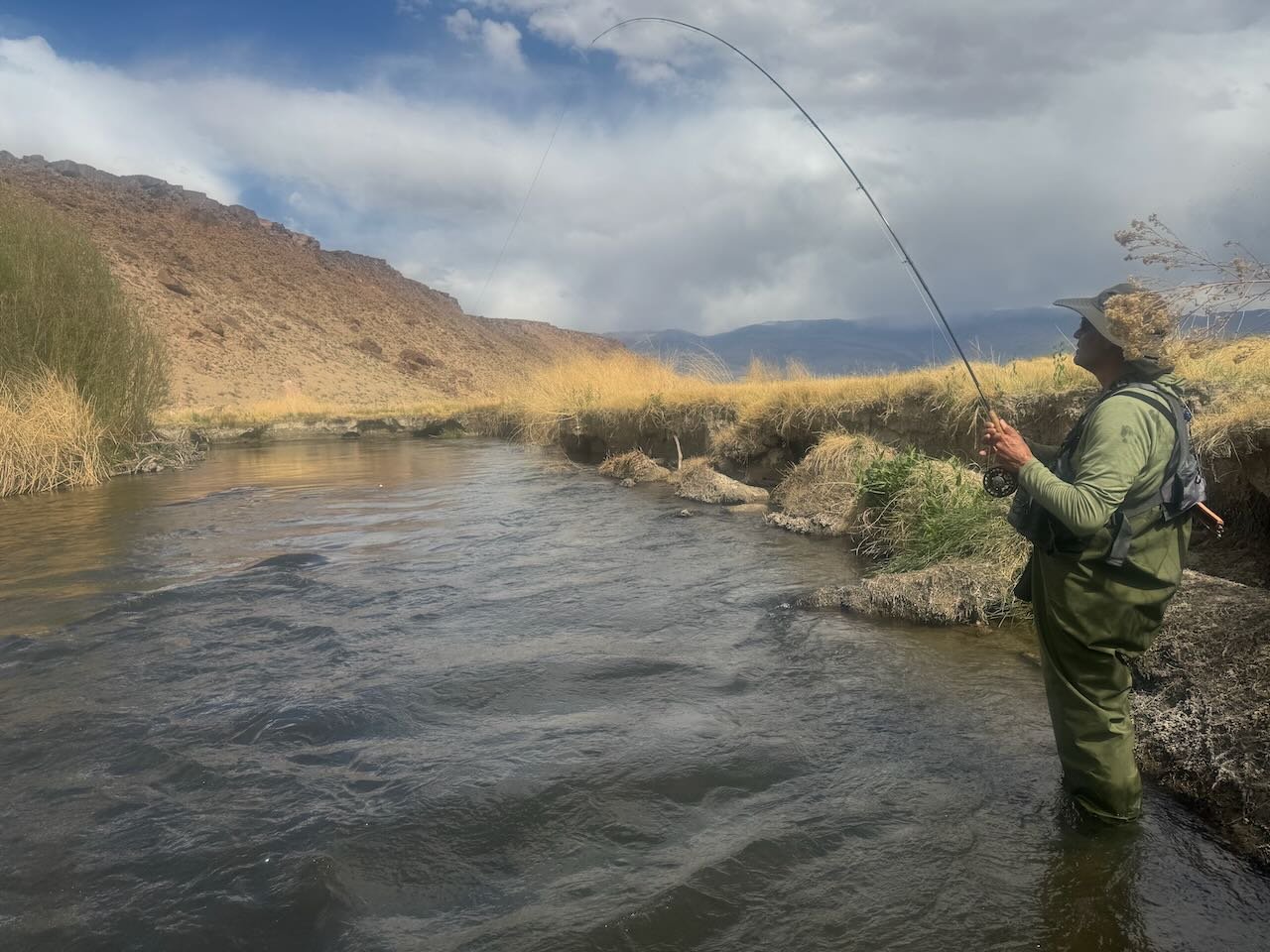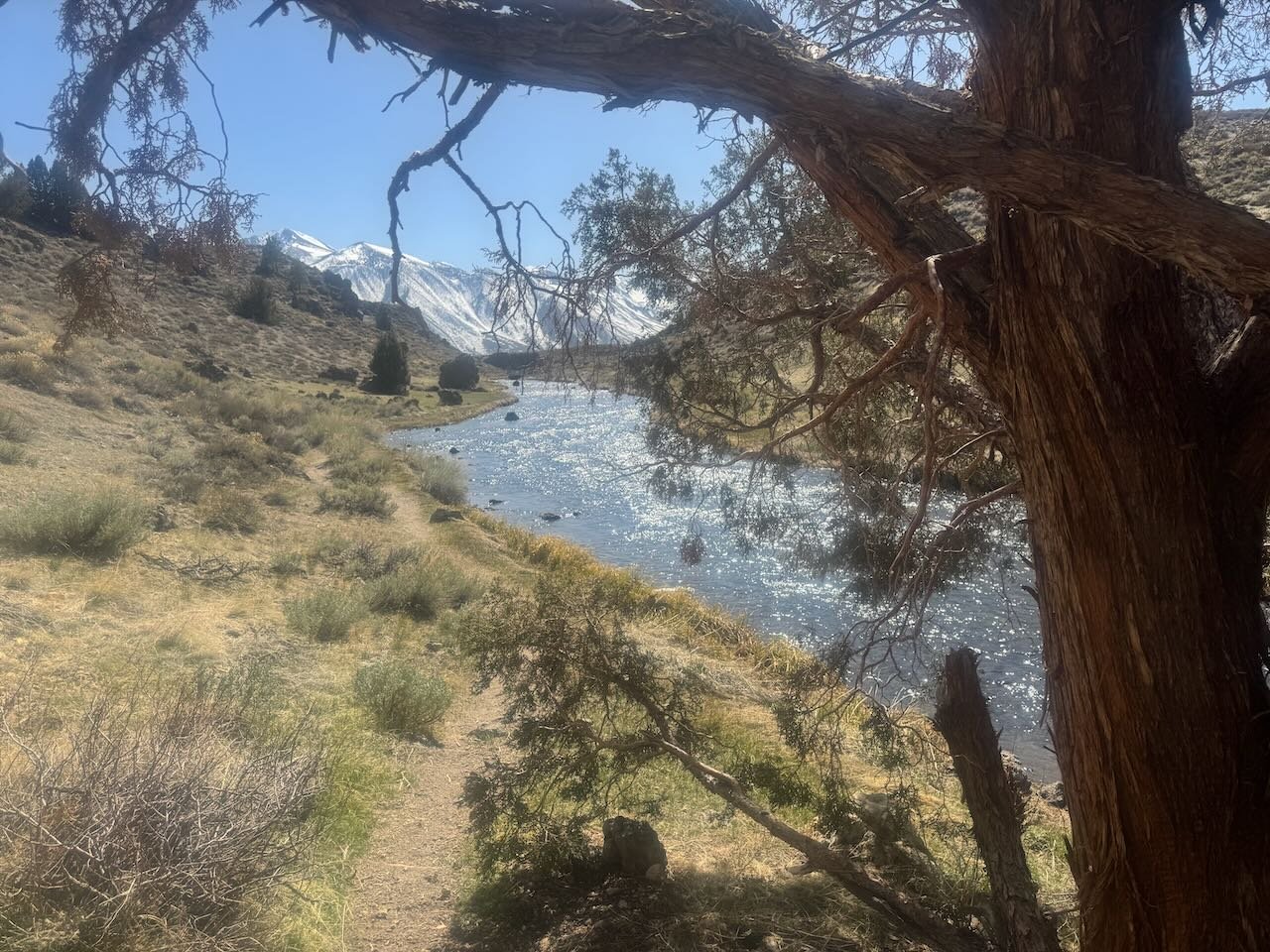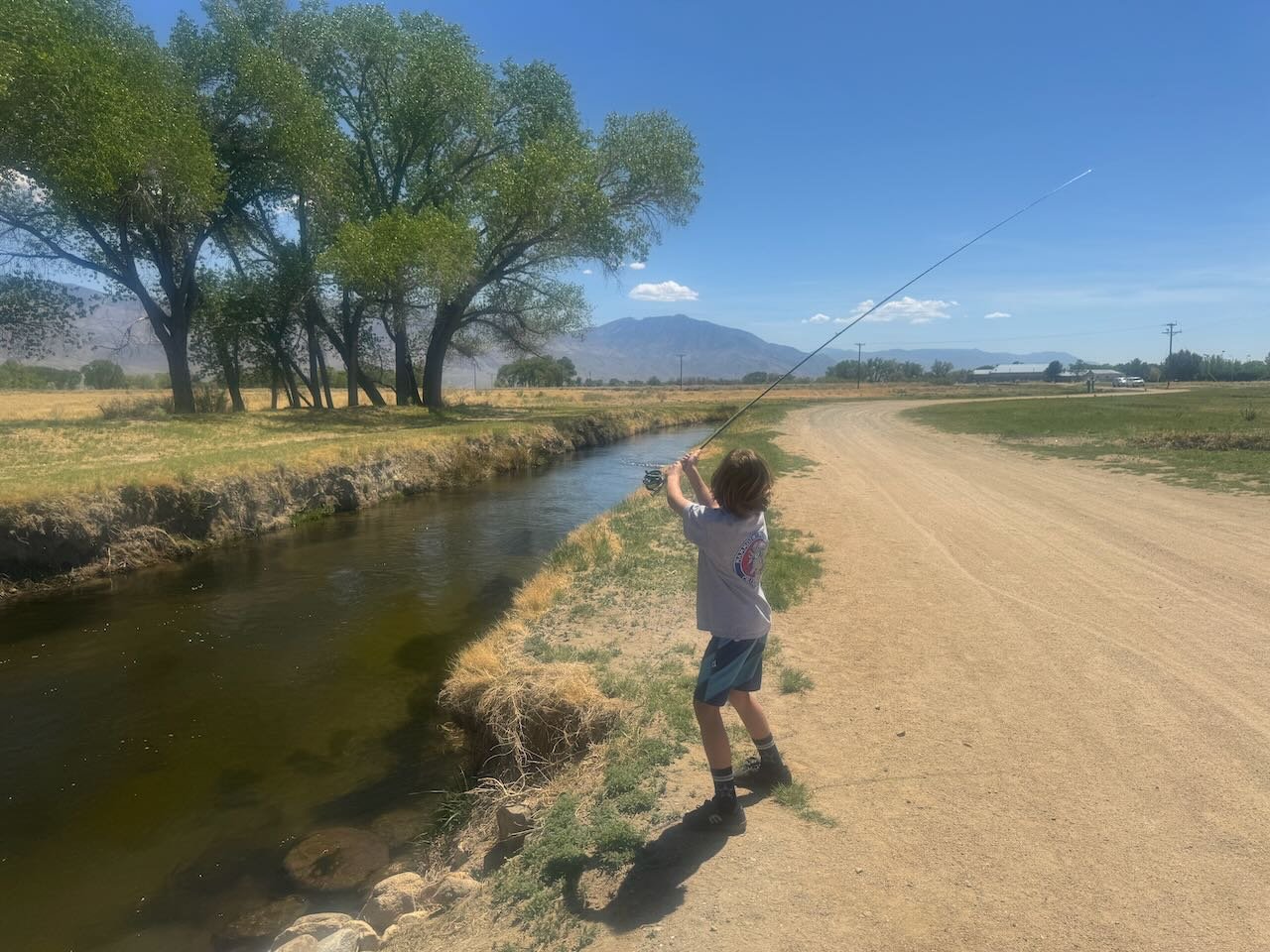Summer weather is here. Hot days and windy afternoons are typical for this time of the year. Get out on your favorite water in the mornings before the afternoon breezes makes it tough to present your flies. Afternoon winds are good for when the grasshoppers are flying around. Have not seen many grasshopper larvae yet. Stoneflies, mayflies and caddis flies are the insects the trout are feeding on. Nymphing before the hatches is very productive. Now is prime time to be fly fishing the creeks that drain the Eastern side of the Sierra. This is the perfect water to fish a dry and dropper rig. The San Joaquin River is opening up at 8:00 P.M. on Wednesday July 2nd at 8:00 P.M, 2025. Mosquito season is underway particularly if you’re on the water late in the evening.
Summer time is for wet wading and dry fly fishing.
Owens River Gorge:
Flushing flows mimic spring runoff conditions. Now that flows are back to normal levels the wild brown trout of the Owens River Gorge are feeding on dries and nymphs. A dry and dropper rig is the perfect way to fish the river. For the dry fly fish with size 16 stimulators, size 16 Adams parachutes and size 16 elk hair caddis. For the nymphs use a size 18 olive quilldigon, size 18 bead head flash back pheasant tail nymph and size 16 bead head flash back gold ribbed hare’s ear nymph. It’s hot in the gorge and fly fishers need to carry lots of water so they can stay hydrated while fly fishing in the Owens River Gorge. Watch out for the stinging nettles which are prevalent all along the banks of the river.
Owens River Gorge is perfect water to fish a dry and dropper rig like this size 16 yellow stimulator and a size 18 bead head flash back pheasant tail nymph.
Hot Creek
Interpretive Site:
With spring runoff subsiding and the clear water in the creek the fish are coming to the surface to feed on hatching trico mayflies, blue wing olive mayflies, pale morning dun mayflies and gray caddis. The morning hatches start off with the female trico hatch and the caddis migration. Mid-morning look for the trico spinner fall. The blue wing olive hatch and pale morning dun hatch follows the trico spinner fall. The pale morning dun hatch is just starting. Look for the caddis hatch late afternoon or early evening. Use size 22 female trico parachutes, size 22 trico spinners, size 20 blue wing olive parachutes, size 20 gray elk hair caddis and size 20 gray parachute caddis.
Hot Creek Canyon is producing on both dry flies and nymphs worked in and around the weed beds in the creek.
Hot Creek
Canyon Section:
Weed beds are at full growth making it tough to fish with nymphs, particularly with the decrease in water flows as spring runoff is decreasing. If you can get your nymph to drift in the lanes between the weed beds without hanging up you can catch fish. Nymph with size 18 olive quilldigons, size 18 bead head flash back pheasant tail nymphs, size 16 bead head flash back gold ribbed hare’s ears, size 12 stoner nymphs and size 20 gray La Fontaine’s caddis emerger. Floating a dry fly over the weed beds does not create as many hookups on the weeds. Use nine to 12 foot 5X or 6X leaders and at least three feet of tippet to fool the wild brown and rainbow trout feeding on the surface. For dry flies fish with size 22 female trico parachutes, size 22 trico spinners, size 20 blue wing olive parachutes, size 20 gray elk hair caddis and size 20 gray parachute caddis. Key to success is fishing with the pattern that coincides with the hatching insect. If the trout are not taking your fly figure out which insect is hatching and use the corresponding dry fly.
The upper Owens River is a great place to learn the fly fishing techniques that produce trout in the Eastern Sierra.
Upper Owens River
Above Benton Crossing Bridge:
Indicator and Euro nymphing in the mornings is producing rainbows and brown trout to 18 inches. These fish are feeding on size 18 olive quilldigons, size 18 bead head flash back pheasant tail nymphs, size 16 bead head flash back gold ribbed hare’s ears and size 12 stoner nymphs. Mayfly hatches are coming off late morning. The trout are feeding on the hatching mayflies if the wind is not sailing the insects off the surface of the river. For the mayfly hatch fish with size 16 pale morning duns, size 16 pale morning dun sparkle duns and size 18 blue wing olive parachutes. On the windy afternoons a size 16 elk hair caddis is fooling a few wild rainbows and browns to 12 inches.
Bishop Creek Canal is a great spot to learn how to fly cast and fly fish with dry flies and nymphs.
Bishop Creek Canal
Behind Bishop Veterinary Hospital:
If you can put up with the mosquitoes there is a good evening ovipositing caddis event. Show up on the creek when the sun goes behind the Sierra Range. Dead drifting a size 16 elk hair caddis and allowing it to drag across the stream and then strip it upstream, fluttering a caddis, produces lots of wild brown trout. Middle of the day nymphing under an indicator or with a Euro rig is producing trout and the rare bass. Using size 16 bead head flash back gold ribbed hare’s ears, size 18 Frenchie’s, size 16 SOS nymphs, size 16 hot spot pheasant tail nymphs, size 18 olive quilldigons and size 12 stoner nymphs is producing trout to 12 inches. For the dry fly fisher try fishing with size 18 Adams parachutes, size 18 blue wing olive parachutes and size 16 elk hair caddis to fool a few surface feeding trout.


